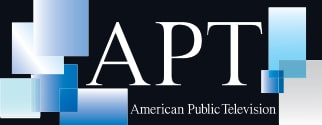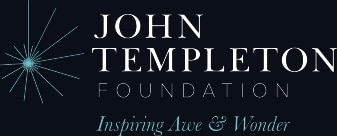About The Series
In its three hour-long programs, SEARCHING asks deep and timeless questions: Where do we humans fit in the grand scheme of things? Why do we yearn for permanence in an impermanent universe? Are we just atoms and molecules, or something more? How does consciousness arise from the material neurons in our brains? What aspects of our humanity will be preserved as we evolve beyond biology, from Homo Sapiens to Homo Techno, part human and part machine? What are the smallest things in nature, and the largest and farthest?
To explore these questions, MIT physicist and best-selling novelist, Alan Lightman (Einstein’s Dreams), engages in lively, revealing and sometimes even humorous dialog with Nobel Prize-winning scientists, philosophers, ethicists and faith leaders. We travel to the prehistoric caves of Font-de-Gaume in France, where drawings and symbols suggest that—as long ago as 40,000 years—our early human ancestors were also searching for meaning. In Florence, Italy, we examine Galileo’s original telescopes. He was the first to show that the heavens are made of the same stuff as Earth, that the universe is impermanent, and that all is made of ordinary material. We walk through the giant atom smasher at CERN on the Swiss-French border, where physicists are trying to find the smallest particles of nature, and visit the laboratory of Nobel laureate Jack Szostak, who is attempting to create a living cell from chemicals present on primitive earth. Lightman converses with an advanced android named Bina48 and talks to ethicist Ruth Faden about what moral obligations we might have to such a being in the future. He speaks with Nobelist Rai Weiss and MIT Dean of Science Nergis Mavalvala (a MacArthur Foundation “genius” fellow) about their experiences in building LIGO, the gravitational wave experiment. Lightman quizzes neuroscientist Robert Desimone about the possibility of understanding the brain well enough to predict whether two people will fall in love, asks the Dalai Lama about the nature of consciousness, and speaks with philosopher Rebecca Goldstein (also a MacArthur genius) about meaning and the spectacle of existence.
Full programs are available below and on public television starting January 2023. Check local listings on our Station Finder.
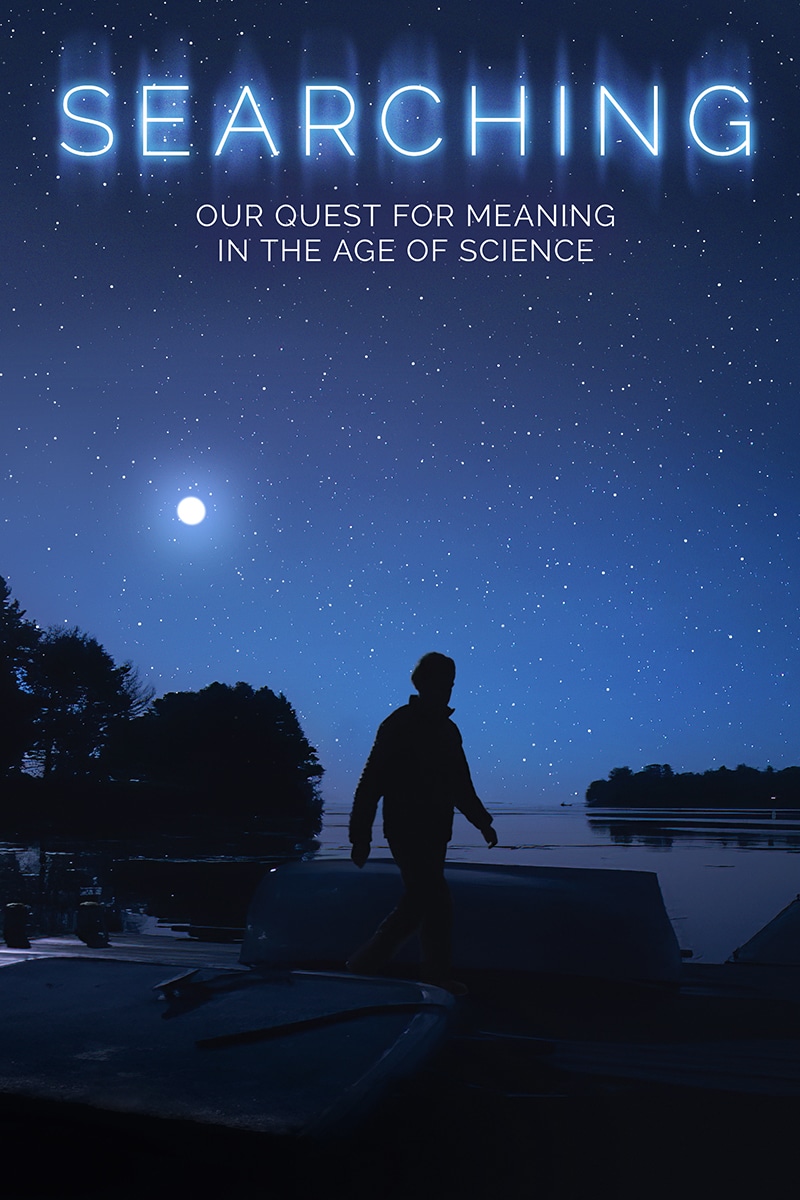
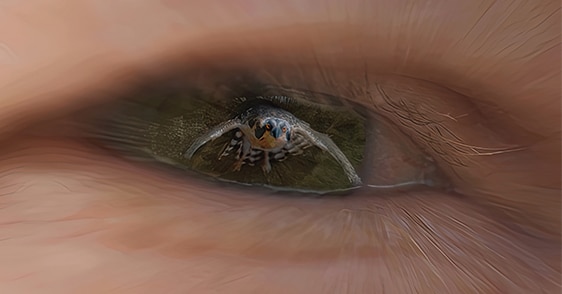
PART 1: THE STARS & THE OSPREY
We’re made of atoms, forged in stars. How do atoms produce consciousness, falling in love?
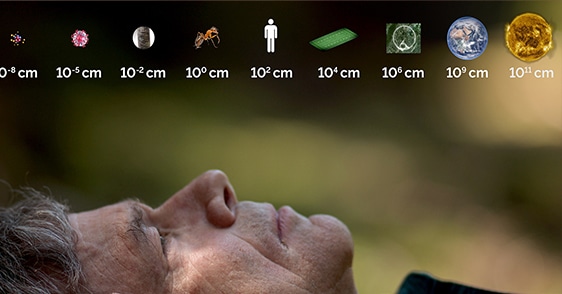
PART 2: THE BIG & THE SMALL
From subatomic particles to galaxies, where do humans fit in the grand scheme of things?
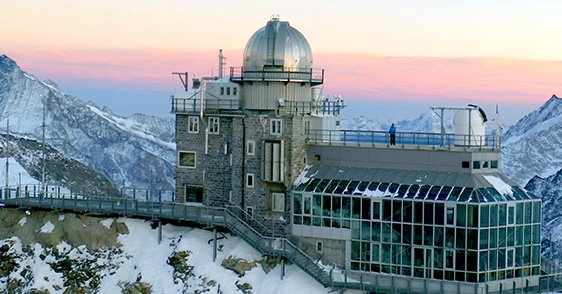
PART 3: HOMO TECHNO
With tech, we are evolving into creatures part human, part machine. What are we becoming?
Production Team
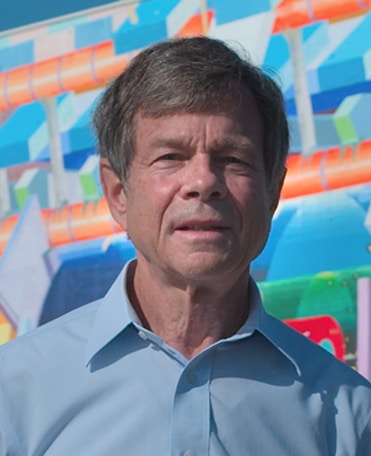
Alan Lightman
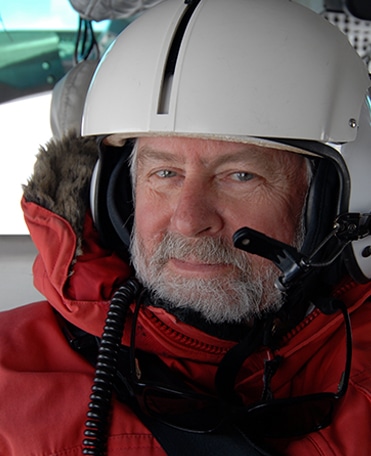
Geoff Haines-Stiles
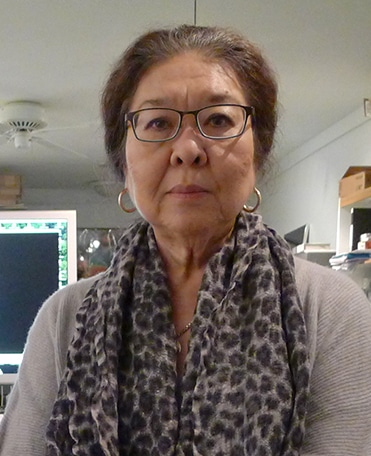
Erna Akuginow
Zoë Keating
Harry Evett
Crazybridge
Pixeldust
View Full Credits
Alan Lightman
On-camera host and co-writer, “SEARCHING: Our Quest for Meaning in the Age of Science”
Alan Lightman is an American writer, physicist, and social entrepreneur. He received his PhD in theoretical physics in 1974, working in the research group of Kip Thorne (2017 Nobel Prize, “Interstellar”). Since then, Lightman has done fundamental research on the astrophysics of black holes, astrophysical radiation processes, and stellar dynamics. He is a past chair of the High Energy Division of the American Astronomical Society and is an elected member of the American Academy of Arts and Sciences. Lightman has served on the faculties of Harvard and the Massachusetts Institute of Technology (MIT) and was the first person at MIT to receive dual faculty appointments in science and in the humanities. He is currently professor of the practice of the humanities at MIT.
Lightman is also the author of numerous books, both nonfiction and fiction, including Einstein’s Dreams, an international bestseller, and the The Diagnosis, a finalist for the National Book Award in fiction. His essays concern the intersection of science, philosophy, and theology and have been twice named by the New York Times as among the best dozen essays of the year, in any category. His writing has appeared in the Atlantic, Granta, Harper’s, Nautilus, the New Yorker, the New York Review of Books, Salon, and many other publications. The Washington Post has called Lightman “the poet laureate of science writers,” Maria Popova, the curator of the widely read blog “The Marginalian” (formerly “Brainpickings”), has described Lightman as “one of the most poetic science writers of all time.” Edward Hall, chairman of the Harvard philosophy department, has said of Lightman “Deceptively brilliant, Lightman’s prose is so simple and graceful that it can be easy to miss the quiet, deep sophistication of his approach to the fraught topic of science and religion.” His book Searching for Stars on an Island in Maine (2018), an extended meditation on science and spirituality, was the basis for an essay on PBS Newshour. For his writing and his synthesis of science and the humanities, Lightman has received 6 honorary degrees, as well as other honors.
In 2005, Lightman founded Harpswell, a nonprofit organization devoted to empowering young women leaders in Southeast Asia, and he has served as chair of its board. For this work, he received the Gold Medal from the government of Cambodia.
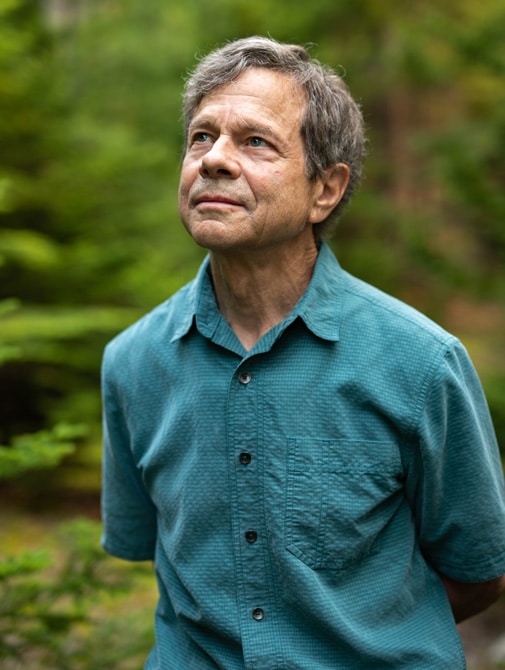
Geoff Haines-Stiles
Geoff Haines-Stiles was a Senior Producer and a Series Director for Carl Sagan’s original “Cosmos” series, now viewed by over 900 million people worldwide, and winner of three Emmys, as well as the Peabody and Ohio State awards for television excellence. He produced and directed “The Creation of the Universe”, hosted by Timothy Ferris, with music by Brian Eno, and featuring Stephen Hawking and Nobel Laureates Murray Gell-Mann, Abdus Salaam and Sheldon Glashow. For PBS’s NOVA series he wrote and produced several space-related programs including “Is Anybody Out There?”, presented by Lily Tomlin, appearing as Ernestine, “The Cosmic Telephone Operator” and “Trudy, the bag lady.” He collaborated with then Senator Al Gore on “Earth in the Balance”, which was to be a multi-part TV series (SNL’s Lorne Michaels, Executive Producer) until presidential politics intervened. In 1990 he was Executive Producer of “Childhood”, a PBS-Channel 4 co-production showing what’s it’s like to grow up in the US, Russia, Japan, Brazil and in the Cameroon rainforest—rated “A-” by Entertainment Weekly.
From 1994-2008 as Project Director for PASSPORT TO KNOWLEDGE (P2K) he created, produced and directed several landmarks in broadcasting, including—with the cooperation of NASA, NSF and NOAA—the first-ever live video interaction between North America and Amundsen-Scott South Pole Station. P2K was assigned 3 orbits of the Hubble Space Telescope, with the proviso that observational targets had to be selected by students collaborating online. P2K was supported by NASA, NSF and NOAA. Other projects have included LIVE FROM THE RAINFOREST, LIVE FROM THE SUN, LIVE FROM THE STORM, LIVE FROM A BLACK HOLE, LIVE FROM THE EDGE OF SPACE AND TIME, and LIVE FROM MARS—in total more than 65 hours of interactive, multiple media educational programming. Geoff conceived, wrote and produced the 3-part PBS mini-series “Earth: The Operators’ Manual” on climate change science and clean energy solutions with Penn State geologist Richard Alley, and the 4-part “The Crowd & The Cloud” on citizen science in the digital age, also distributed by American Public Television in the United States and worldwide. Haines-Stiles holds a Double First in History from Cambridge University, and a Master’s in Communications from the Annenberg School of Communications, University of Pennsylvania.
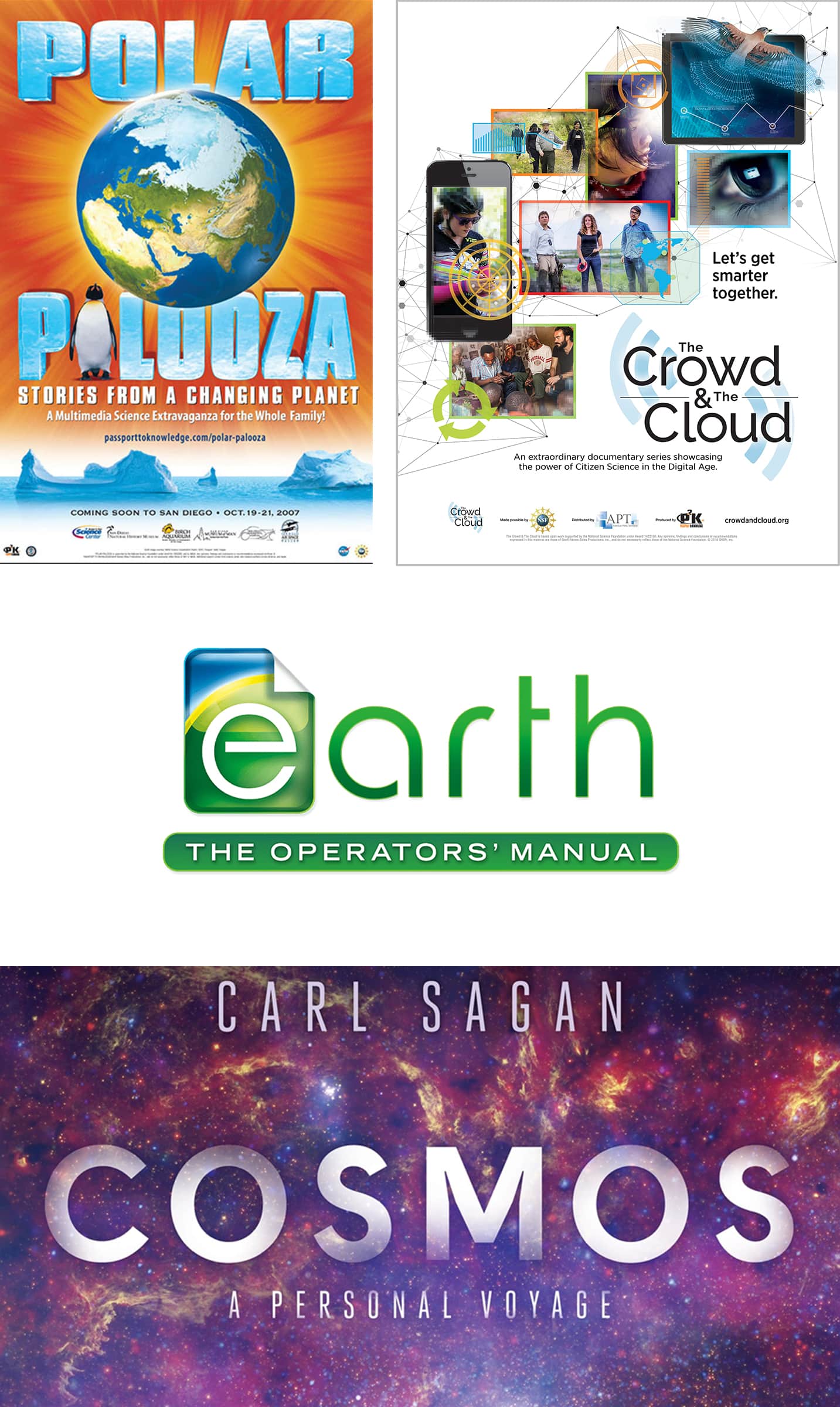
Erna Akuginow
Erna Akuginow is Executive in Charge for Geoff Haines-Stiles Productions, Inc., an independent production company dedicated to making current and cutting-edge science understandable and relevant to the lay person. Its PASSPORT TO KNOWLEDGE (P2K) project began with the Live From… specials which turned linear broadcast television into a two-way communication system that connected penguin researchers, divers and other Antarctica-based scientists to students across the US—in real time. P2K evolved into a network of scientists, educators, outreach specialists, museums and science centers who are comfortable using music, sound effects, props, art, stunning visuals and—most importantly—stories to make science accessible and memorable. P2K and its “Marsapalooza” initiative put the engineers and rocket scientists behind NASA’s Mars rover missions on an IMAX stage at Universal Studios, and AMNH astronomer Neil (“Cosmos” 2.0) Tyson dropped eggs from an upper balcony at the American Museum of Natural History to simulate a landing on Mars. During POLAR-PALOOZA, Akuginow organized a national tour taking a piece of the Greenland ice cap, 120,000 years old, on the road to National Geographic in Washington DC, AMNH and the New York Times Center in NYC, and to other major science centers and Natural History Museums. POLAR-PALOOZA then went international to China, Australia, Brazil, Argentina and the Russian Federation, pairing Americans with local researchers for public presentations. Akuginow won AGU’s 2013 “Robert C. Cowen Award” for “Sustained Contributions to Earth and Space Science Journalism, the Women in Communications’ Sara Award, the American Women in Radio & Television Crystal Award, a National Clarion Headliner’s Award, as well as the National Press Association Best Documentary Award, the New York International Film Festival Jury Award for Best TV Special, and a Christopher Award for Best Television Program, “Childhood.”
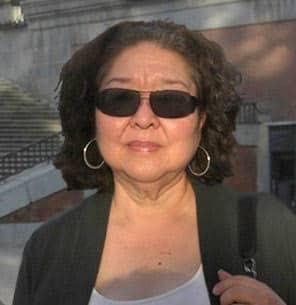
Zoë Keating
Composer and performer Zoë Keating has spent the last 20 years exploring the landscape of sounds a string instrument can make. She coaxes sounds out of the very edges of her cello, adeptly layering them into “swoon inducing” (San Francisco Weekly) music that is unclassifiable yet “a distinctive mix of old and new” (National Public Radio). She is known for her use of technology – which she uses to record and sample her cello onstage and in the studio –and for her DIY approach—composing, recording and producing her works on her own terms, without the help of a record label.
Born in Canada, Keating started playing the cello when she was eight and went on to pursue electronic music and contemporary composition as part of her Liberal Arts studies at Sarah Lawrence College. After graduation she moved to San Francisco and built a career as an information architect and data analyst while moonlighting as a cellist in rock bands. Keating eventually combined her love of music and technology, using a computer to live-layer her cello and performing for late-night parties in the San Francisco warehouse in which she lived.
Keating’s recorded works have achieved a surprising degree of popular ubiquity for a DIY artist. Her self-produced albums have several times reached #1 on the iTunes classical charts and spent many months on the Billboard classical charts. Her recordings are used as bumper music for NPR’s Morning Edition, as the theme music to OnBeing, as the “thinking-music” of the Sherlock Holmes character on CBS’s Elementary, in countless documentaries and in tens of thousands of online videos of everything from professional and amateur dance performances to rock climbing and gaming videos.
Keating also composes for TV, theater, film and dance. She co-composed, along with Jeff Russo, the score for the HBO movie “Oslo”, which earned them an Emmy Nomination in 2021 for Outstanding Music for a Television Movie. In addition to her recordings, Keating performs to rapt audiences around the world. Each performance is unique as she spontaneously improvises around her works, demonstrates how she makes them and tells the stories behind each piece.
A vocal advocate for the rights of artists and creators, Keating writes and speaks often about copyright and the mechanics of the music industry economy. She was elected a governor of the San Francisco chapter of the Recording Academy, named a Young Global Leader by the World Economic Forum and served as a board member of CASH Music, a nonprofit organization that built open source digital tools for musicians and labels.
As a cellist Zoë has played with a wide range of artists, including Imogen Heap, Amanda Palmer, Guy Sigsworth, Tears for Fears, DJ Shadow, Dan Hicks, Thomas Dolby, Sean Ono Lennon, John Vanderslice, Rasputina, Pomplamoose and Paolo Nutini.
Zoë lives in Burlington, VT and her latest projects include scoring for SEARCHING, and a motion picture also scheduled for release in 2023.
“…a distinctive mix of old and new—layers of sound, that feel more like orchestrations than a solo instrument.” – National Public Radio
“Swoon-inducing. Like taking a triple-shot of Absinthe before stepping outside of the bar just in time to see the Sun exploding.” -SF Weekly
“…uses live looping to transform solo performances into multipart masterpieces.” – Electronic Musician
“…sublime minimalist music with a pop sensibility” – San Francisco Weekly
Awards:
World Economic Forum, 2011. Young Global Leader
Creative Capital Foundation, 2009. Performing Arts grant
San Francisco Artsfest, 2005. Emerging artist award
Belle Foundation, 2005. Artistic development grant
Zoë’s music can be purchased and downloaded here.
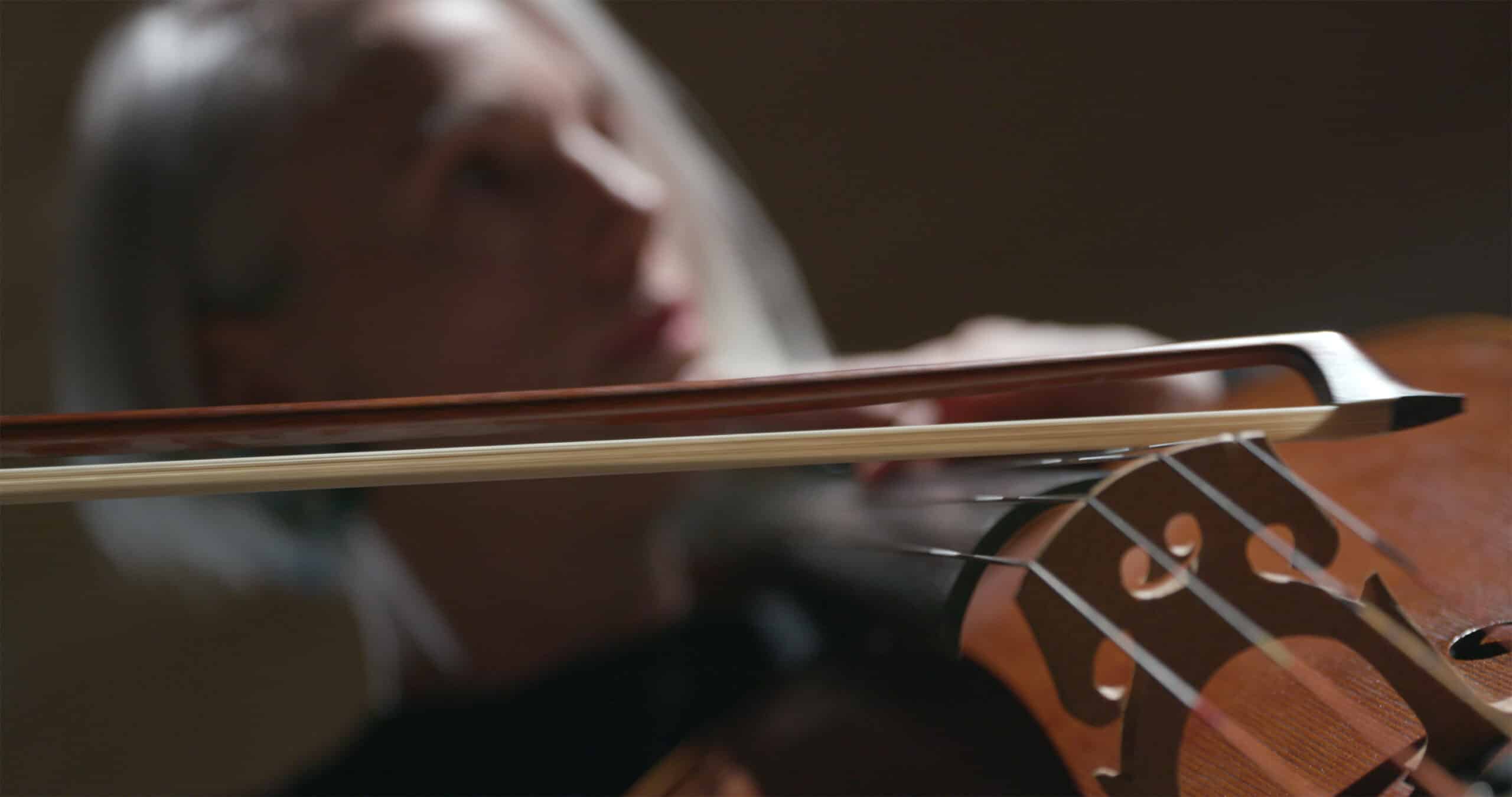
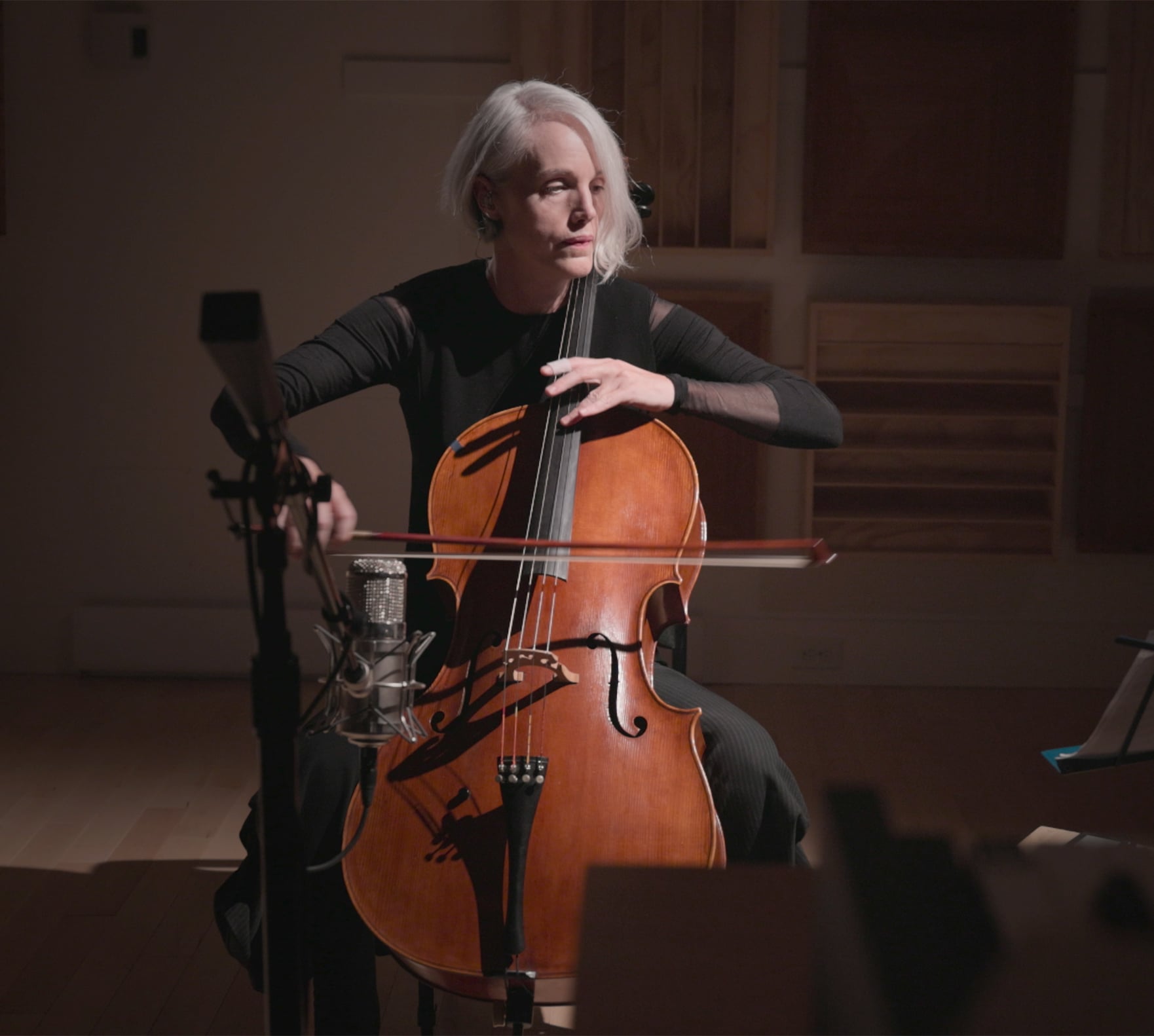
Crazybridge Studios
Crazybridge Studios has created science- and history-oriented 3D animation and motion graphics for television, film, and attractions for nearly two decades. Their work can be seen in over 300 hours of nonfiction programming on 25 networks, including PBS, Discovery, The History Channel and National Geographic. In 2014, the Crazybridge team received an Emmy for their work on H2’s “Big History.” Crazybridge also produces award-winning 4D and VR motion rides, as well as CGI for exhibits that can be seen in museums such as Smithsonian Institution, The Intrepid Sea, Air, and Space Museum, The Royal Alberta Museum, and the Franklin Institute.
Selected credits:
- Big History [H2] (Emmy Award, Outstanding Graphic Design and Art Direction)
- Earth: The Operators’ Manual [Geoff Haines-Stiles Productions, Inc., and PBS]
- History of the World in Two Hours [History Channel] (Emmy Nomination, Outstanding Graphic Design and Art Direction)
- Into Iceland’s Volcano [National Geographic]
- Life After People [History Channel]
- Longer Strides: The Apollo 11 VR Experience [Museum of Flight] (Silver Telly Award, Inaugural Award for VR Production)
- Patton 360 [History Channel]
- Stories of Intrepid [Intrepid Sea, Air, and Space Museum] (CINE Golden Eagle)
- The Blue Angels 4D Experience [Nat’l Naval Aviation Museum] (Telly Award, Stereoscopic Production)
- The Crowd & the Cloud [Geoff Haines-Stiles Productions, Inc. and American Public Television]
- The Universe [The History Channel]
For the SEARCHING mini-series, Crazybridge contributed to multiple sequences in all three programs, including the Main Titles. Building on a concept suggested by Haines-Stiles, since Alan—a writer—made notes of his musings and ruminations at many locations, Crazybridge overlaid Alan’s handwriting and doodles to create the rich and evocative title sequence which embodies the feeling of searching and traveling, and introduces many of the people and places seen in the three hours. Crazybridge also inserted an osprey into Alan’s eye, and vice versa, to enhance the emotional ending of part 1, and built on Harry Evett’s storyboards to show how we humans are almost exactly midway in size between an atom and a star in the initial sequence of part 2. Chris Gaal and his colleagues also took on the challenge of visualizing the Planck scale, where time and space dissolve and, of course, no images can exist! From that leap of the imagination to the mundane removal of dust on the camera sensor in the “Ants” sequence of part 3, Crazybridge was an important partner in all parts of SEARCHING.
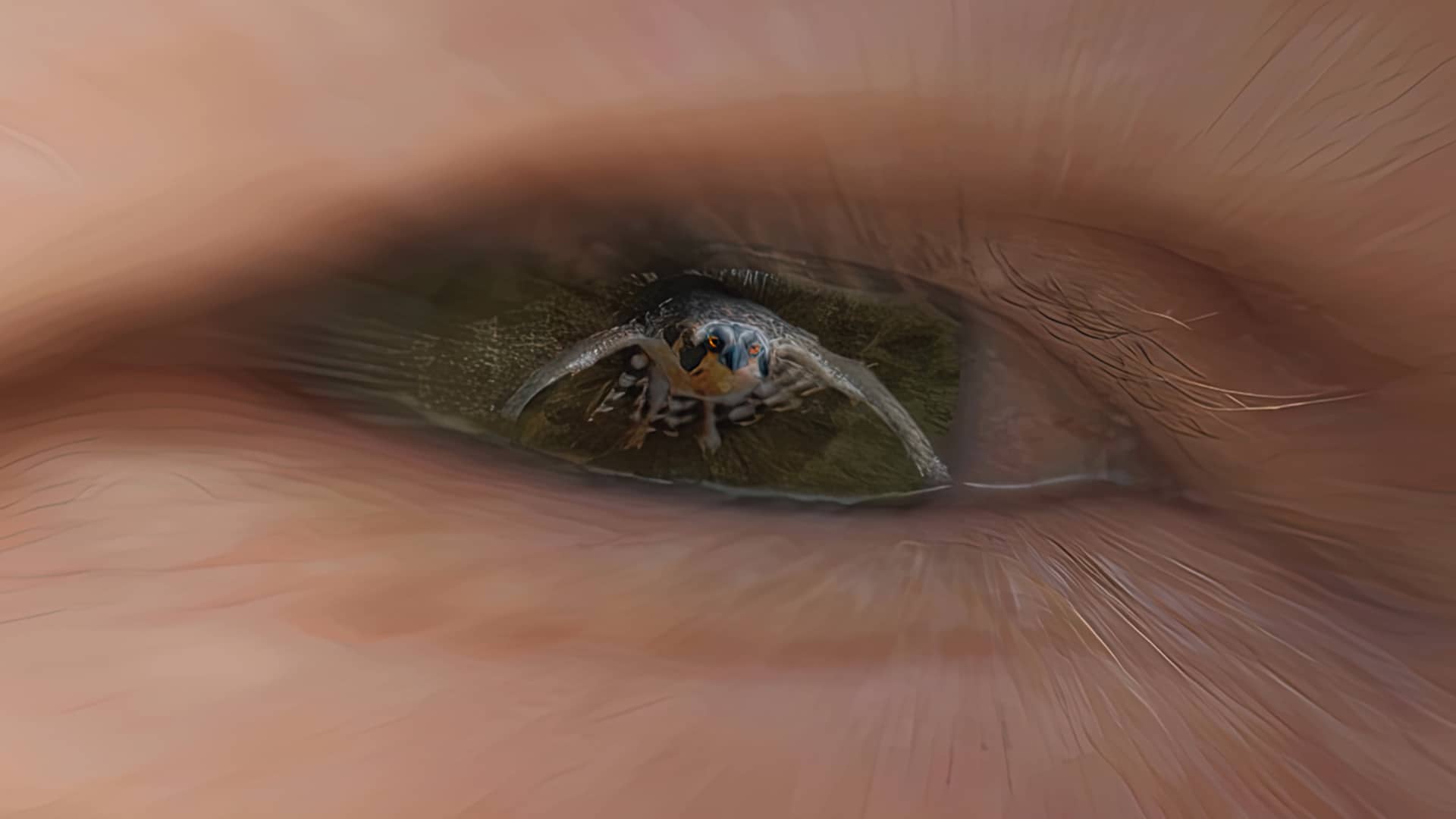
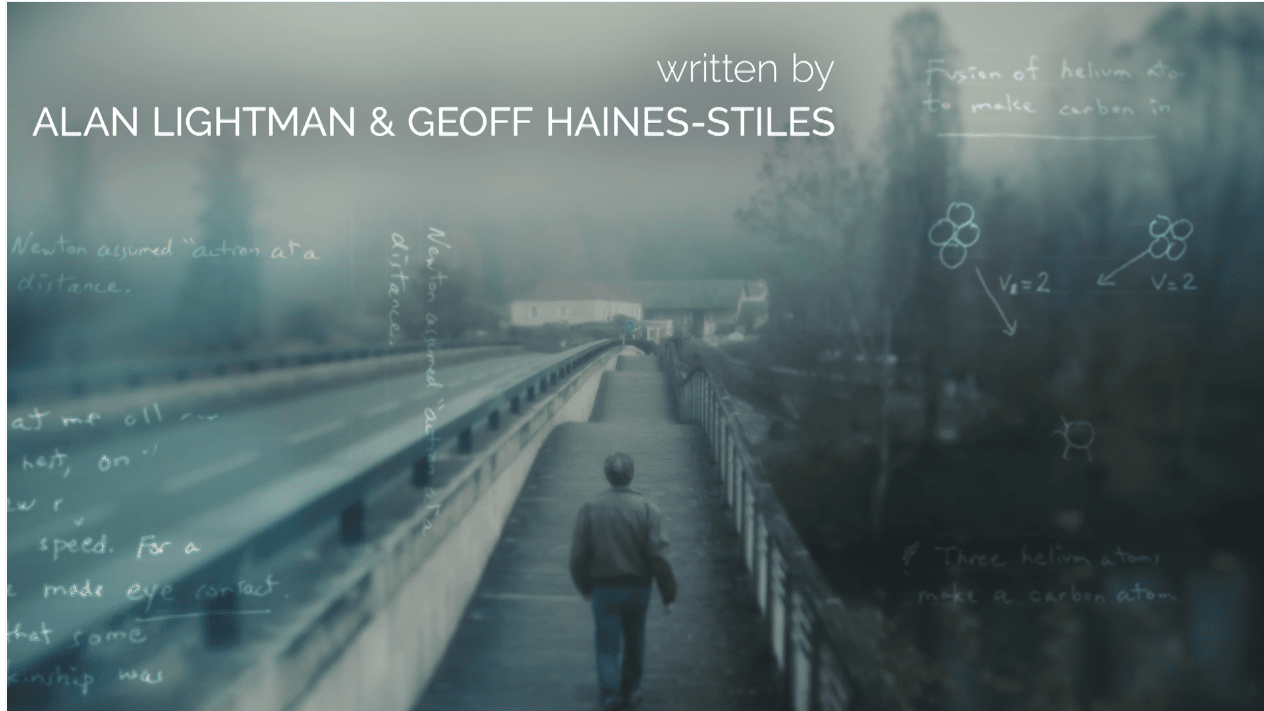
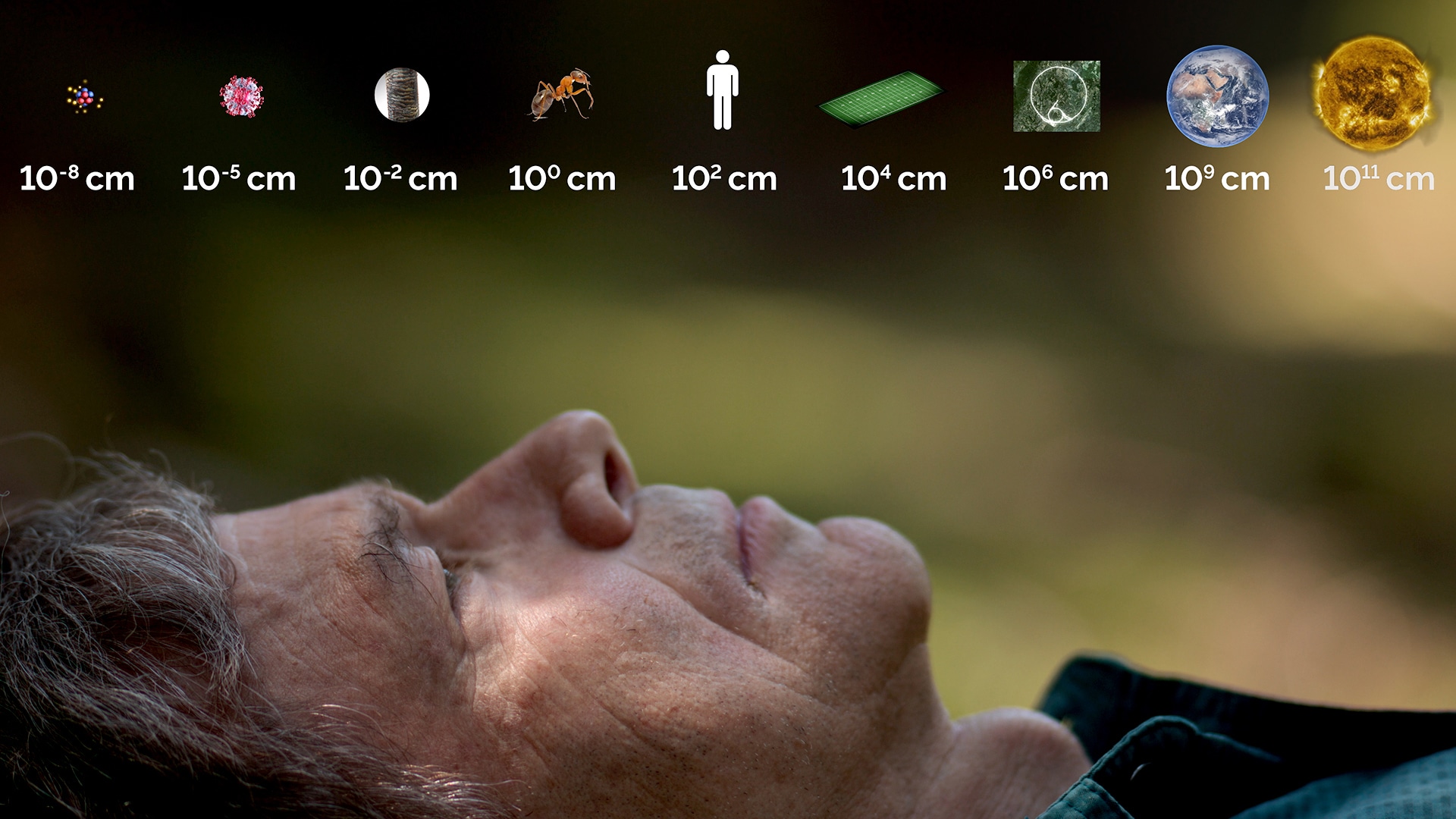
Harry Evett
Harry Evett is an English educational YouTuber and animator who makes a wide variety of space and science-related videos, as well as comparisons of spatial objects in the universe. Evett launched his YouTube channel on October 30, 2016, and currently resides in the United Kingdom.
The most popular video on his channel is Universe Size Comparison 3D, which has reached 142 million views in 2022. “Planets in our Universe can get extremely large, but stars get even bigger. In this video we explore the sizes of moons, planets, stars, and even beyond, including black holes and even galaxies.”
For the SEARCHING mini-series, Harry worked with Alan Lightman on the underlying physics and with producer/director Geoff Haines-Stiles and Alan on the visualization of several challenging sequences. Early in pre-production, Harry created storyboards for the “Big Bang to Us” sequence in Part 1, and the “Factors of Ten” and Planck Scale sequences in Part 2. Once Alan approved the science behind the visuals, Harry rendered and delivered them in full resolution.
Says Harry of his very popular YouTube productions, “I love creating these videos, and I aim to do it full time eventually. However, producing and rendering 3D graphics is extremely time consuming and hardware heavy, often taking weeks to make a single video. Currently my upload schedule is about one video per couple of months, with big uploads like the annual Universe Size Comparison taking months to make.”
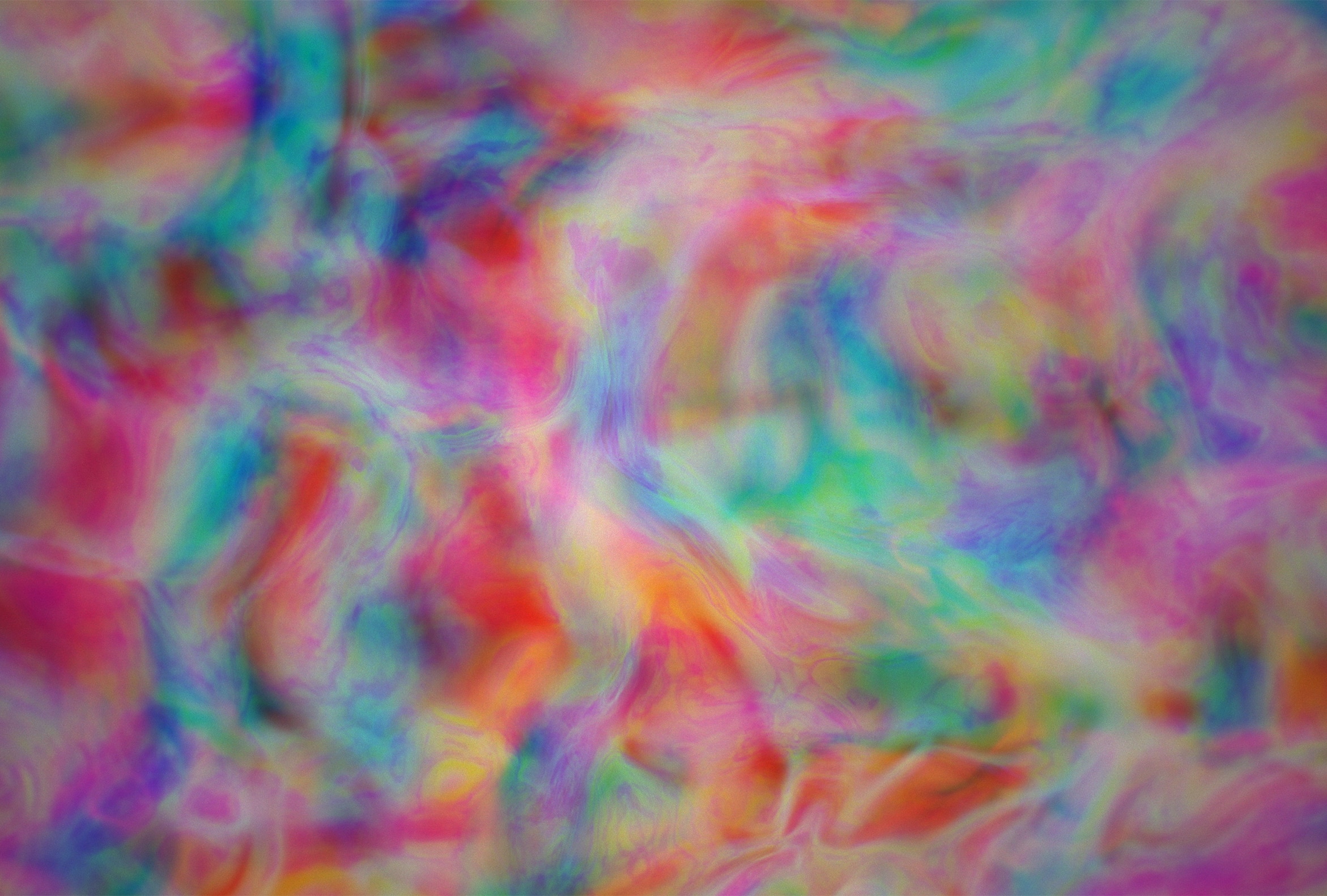
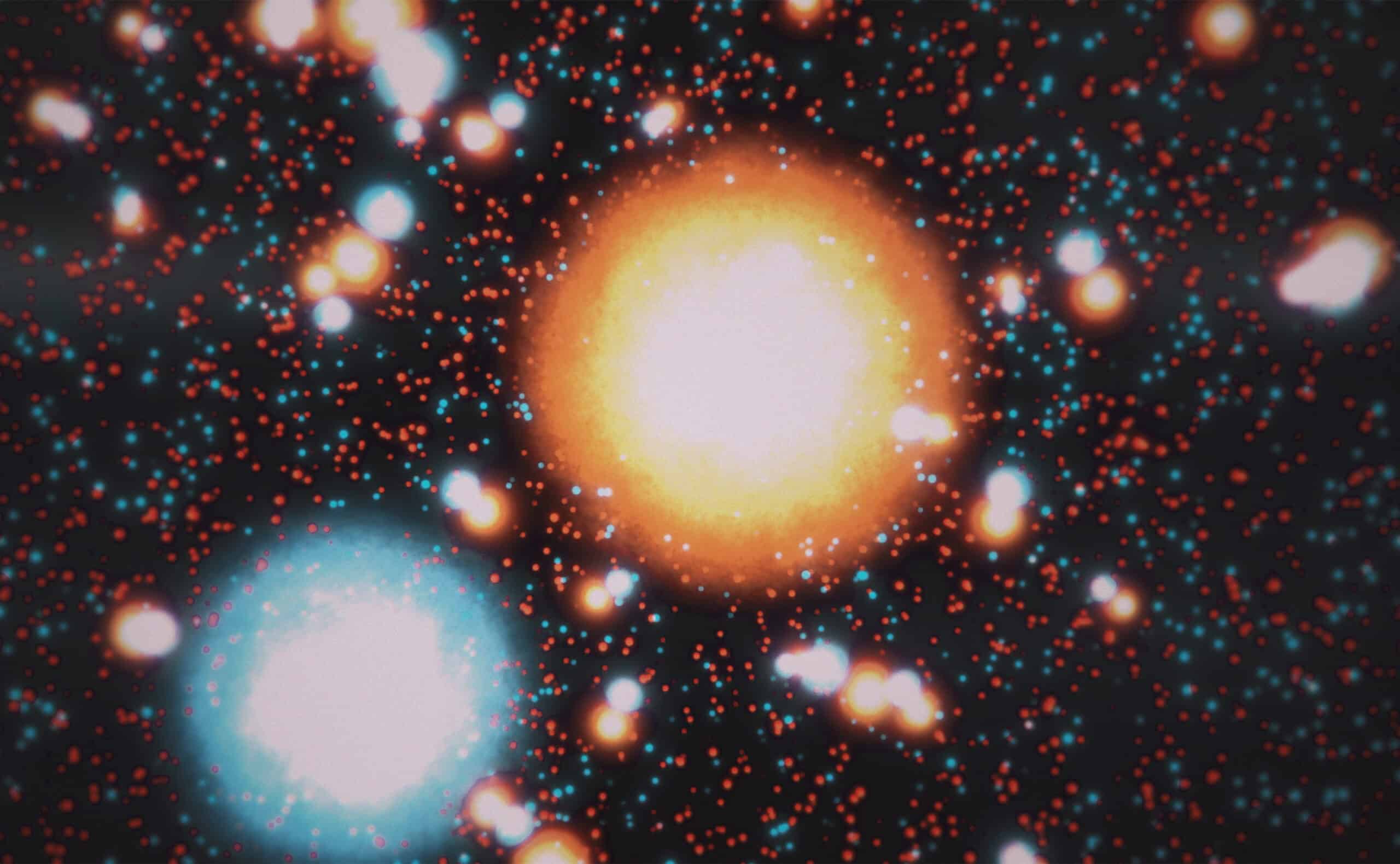
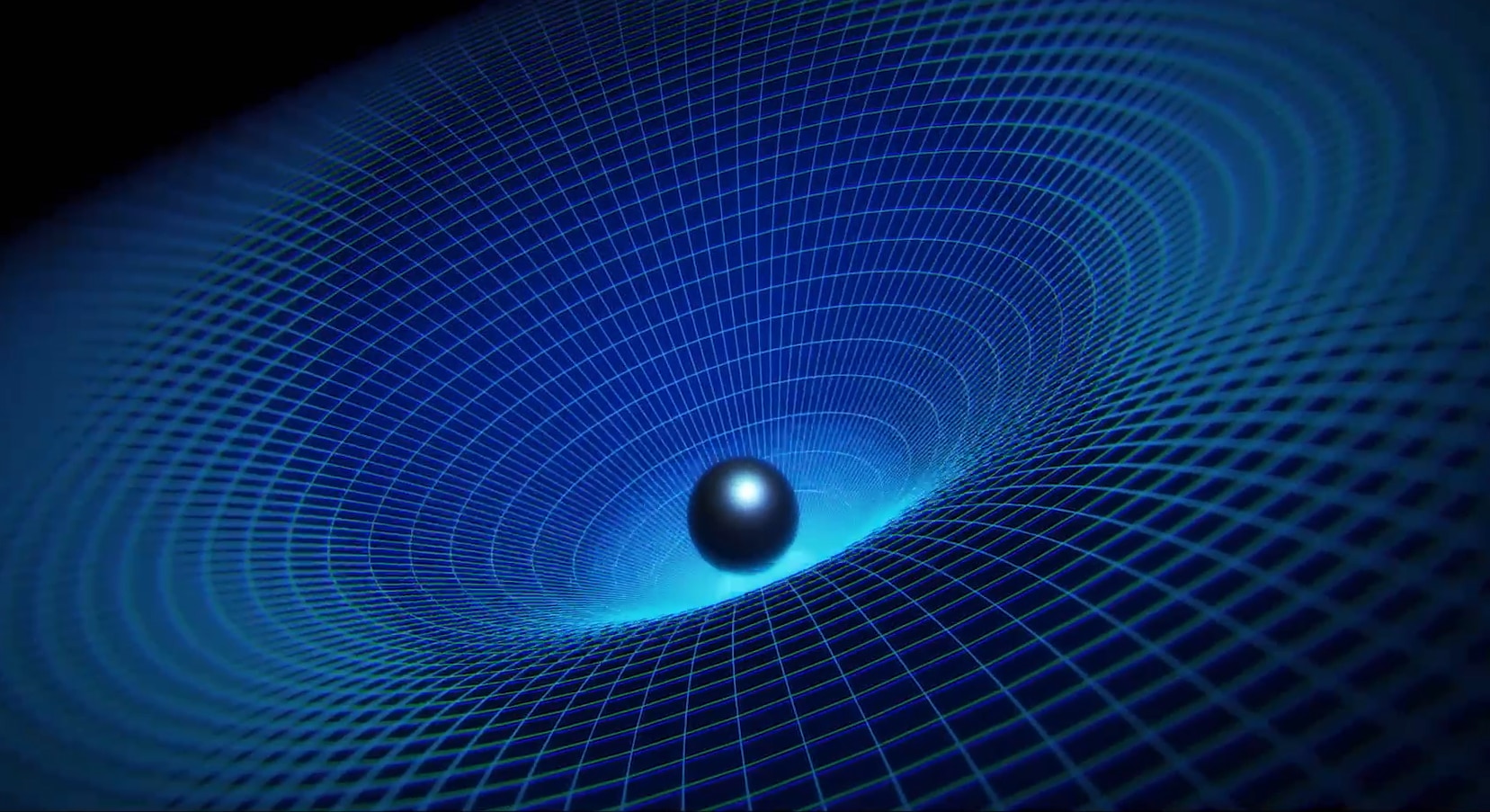
Pixeldust
Pixeldust is an award-winning media production studio that specializes in animation, video production, interactive media design and location-based experiences. Pixeldust strives to be a studio that elevates the world of entertainment through constant innovation.
Pixeldust has a global client portfolio. Located in Metro Washington DC, New York City, Madrid (Spain) and Monterrey (Mexico), their world-class roster of multidisciplinary designers, content developers, producers, and programmers have worked at the pinnacle of the entertainment and advertising industries.
The name “Pixeldust” is a reflection of a belief that magic is real, and that it can be found through good storytelling.
For the SEARCHING mini-series, Pixeldust created the galactic and stellar animations seen in the “Big Bang to Us” sequence in Part 1, with imagery also appearing in the Main Titles.
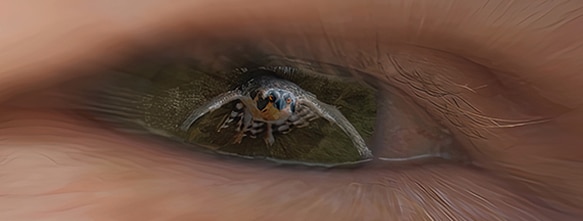
Part 1THE STARS & THE OSPREY
Produced & Directed by
GEOFF HAINES-STILES
Written by
ALAN LIGHTMAN
&
GEOFF HAINES-STILES
Executive Producer
ERNA AKUGINOW
Producers
NATHAN DAPPEN
NEIL LOSIN
Associate Producer
SEAN FEUER
SAMUEL STEFAN
GIACOMO GANDOSSI
Music composed & performed by
ZOË KEATING
Composer assistant & additional music remixer
JARED MEEKER
Score mixing & mastering engineer
COUNT
Editors
JEDD EHRMANN
SEAN FEUER
ART HOWARD
Additional editing
NATHAN DAPPEN
GEORGIA KRAUSE
DAVID HUTCHINSON
Main titles & motion graphics
CRAZYBRIDGE STUDIOS
Early universe storyboards & animations
HARRY EVETT
Astronomical computer graphics
PIXELDUST STUDIOS
Cinematographers
RICHARD CHISOLM
NATHAN DAPPEN
NICCOLÒ FRANCOLINI
JOSEPH FRIEDMAN
ART HOWARD
NEIL LOSIN
LEANDRO MONTI
Additional cinematography
NATHAN CLAPP
SEAN FEUER
DAVID HUTCHINSON
AMY ODEN
Maine timelapses
NATHANEIL CHILD
Sound
CAMILLE BONARD
JONATHAN COHEN
DWAYNE DELL
UGO PIERRE-MARIE DONIAS
ANDRE JOHNSON
Drone cinematography
SAMUEL STEFAN
MARC WEGMUELLER
NATHAN DAPPEN
Location coordinators
MARC WEGMUELLER
ADRIEN PILET
GIANMARCO FUSI
Production Supervisor, France & Switzerland
ELISABETH CHATZINIKOLAOU
Camera assistants
ALESSIO MUSI & ALESSIO SABATINI
Osprey encounter
Cinematographer and archive
JACOB STEINBERG
Assistant camera
CHRIS WUEST
“Young Alan” sequences
Producer
SEAN FEUER
Cinematographer and production design
CHLOE IRIGOYEN
Young Alan
DOMINIC CIPRIANI
Miami-Dade County’s Office of Film and Entertainment
FilMiami
Black Point Park and Marina
Production Services Provided by
Center City Film and Video, Inc
Philadelphia, PA
Colorist
JASON DRUSS
Additional color
MOLLY STAYMAN
Post Production Supervisor
ANTHONY URO
Online Conform
MARK FARKAS
Sound Facility
PHILADELPHIA POST
Rerecording Mixer
JOHN BAKER
Sound Editor
STEVE CAMPAGNA
Sound Supervisor
SCOTT WAZ, CAS
Narration recording
RUMBLESTRIP AUDIO, Boston
TODD HRINDA
KEN CHASE
Dalai Lama interaction
Producer, Dharamshala
DON EISENBERG
Camera
TENZIN PHUNTSOG
VEN LOBSANG KUNGA
Sound
CHEMEY TENZIN
Technical Director
TENZIN CHOEJOR
Zoom coordinator
LOBSANG TENZIN
Consultants
TENZIN PRIYADARSHI
THUPTEN JINPA
Tashi Lhunpo Buddhist Temple, Howell NJ
TENZIN DAKPA
DAVID SANDERSON
Cinematographer
JOSEPH FRIEDMAN
Science consultants
DONALD GOLDSMITH
ALEX JI
DON PAGE
PAUL SCHECHTER
Creative consultant
PAULA FROEHLE
Publicity
ADAM J. SEGAL
The 2050 Group
Graphic Design & Marketing
MORAES INC.
GREG MORAES
LAURA HUBBARD
DANITA BAYER
Web Development
NICK BUSHKAR
Accommodations furnished by
PITTI PALACE HOTEL AT PONTE VECCHIO
Supermarket location furnished by the
PORTLAND FOOD CO-OP
Sumire lenses furnished by
CANON
Pendulum shop furnished by
FIRENZE RAKU
Funding provided by the
JOHN TEMPLETON FOUNDATION
The producers wish to Thank
HIS HOLINESS THE DALAI LAMA
ROBERT DESIMONE
PAOLO GALLUZZI
FABIOLA GIANOTTI
REBECCA GOLDSTEIN
BRUNO MAUREILLE
NERGIS MAVALVALA
JACK SZOSTAK
RAI WEISS
KIMBERLY ARCAND, APRIL JUBETT, MEGAN WATZKE
GRAHAM BALL
CHICAGO MEDIA PROJECT
STEVE COHEN, ALEXANDER KELLISON
HEATHER CIPRIANI
NAN HALPERIN
PETER HAMILTON
SARAH KLEIN, REDGLASS PICTURES
CHRISTOPHER LEVENICK
JEAN LIGHTMAN
TJ MARTIN
JAMES SWEITZER
GEORGE WHITESIDES
KIT WHITTEN
Location assistance gratefully acknowledged
Museo Galileo
ROBERTO FERRARI, DIRECTOR
PAOLO GALLUZZI
SABINA BERNACCHINI
GIORGIO STRANO
ELISA GIUSTI, TOSCANA FILM COMMISSION
GIUSEPPINA BITOSSI
GIOVANNI BONIFAZZI
PADRE BERNARDO GIANNI
STEFANO FANI
COMUNE DI FIRENZE
Font-de-Gaume cave & La Ferrassie
MARC MARTINEZ
JEAN-PIERRE VANZO
CENTRE DES MONUMENTS NATIONAUX
NATHALIE FOURMENT, NATIONAL MUSEUM OF PREHISTORY
NATHALIE MOREL, NATIONAL CENTER FOR PREHISTORY
Ministry of Culture, France
BRUNO MAUREILLE, CNRS HEAD OF RESEARCH,
UMR5199 PACEA, UNIVERSITY OF BORDEAUX”.
MME MAYELIN ENAMORADO
DÉPARTEMENT DU CENTRE DES MONUMENTS NATIONAUX
Desimone lab
JULIE PRYOR
CATHERINE NUNZIATA
YASAMAN BAGHERZADEH
STEVEN P. SHANNON
JULIA MARTIN
SARAH MCDONNELL
LIGO lab, MIT
JULIA C. KELLER
MARIE WOODS
MYRON MACINNINS
CERN
SARAH CHARLEY
Szostak lab
FANNY NG
STEPHANIE ZHANG
KYLE STROM
KATIE MARQUEDANT
MICHAEL D. MORRISON
JULIE CUNNINGHAM
Massachusetts General Hospital
Harvard University
Stock and stills rights & permissions
Font-de-Gaume cave bison and tectiform images:
© N. Aujoulat, Centre National de Préhistoire/Ministère de la Culture
LIGO footage/graphics courtesy of MIT/Redglass Pictures, “Sound of Gravity”
Circuit board © Raimond Spekking / CC BY-SA 4.0 (via Wikimedia Commons)
Edwin Hubble plates courtesy of Carnegie Institution for Science.
Crick & Watson image by A. Barrington Brown, © Gonville & Caius College / Coloured by Science Photo Library
The Nobel Foundation
&
Alamy
ArtGrid
Caltech, MIT, LIGO, NSF
Chandra X-ray Observatory:
ESA/Hubble Space Telescope
Getty Images
IAU and Sky & Telescope magazine (Roger Sinnott & Rick Fienberg)
Kai Staats
Margaret Bourke-White/Life.com/Shutterstock
NASA
NASA Chandra X-ray Observatory
NASA/Marshall Space Flight Center
Pond5
Redglass Pictures
Shutterstock
STScI
SXS, Simulating eXtreme Spacetimes Project
Wikimedia
Executive in Charge
ERNA AKUGINOW
For American Public Television
JUDY BARLOW
SHAWN HALFORD
LAUREN MILLS
© 2022 Geoff Haines-Stiles Productions, Inc.
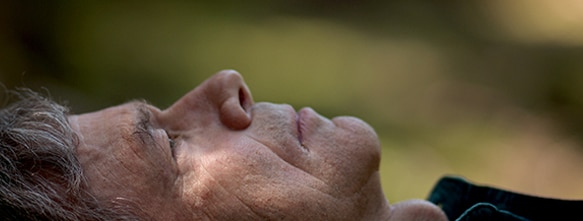
Part 2THE BIG & THE SMALL
Produced & Directed by
GEOFF HAINES-STILES
Written by
ALAN LIGHTMAN
&
GEOFF HAINES-STILES
Executive Producer
ERNA AKUGINOW
Producers
NATHAN DAPPEN
NEIL LOSIN
Associate Producer
SEAN FEUER
SAMUEL STEFAN
GIACOMO GANDOSSI
Music composed & performed by
ZOË KEATING
Composer assistant & additional music remixer
JARED MEEKER
Score mixing & mastering engineer
COUNT
Editors
JEDD EHRMANN
SEAN FEUER
ART HOWARD
Additional editing
NATHAN DAPPEN
GEORGIA KRAUSE
Main titles & motion graphics
CRAZYBRIDGE STUDIOS
Early universe storyboards & animations
HARRY EVETT
Astronomical computer graphics
PIXELDUST STUDIOS
Cinematographers
RICHARD CHISOLM
NATHAN DAPPEN
SEAN FEUER
ART HOWARD
DAVID HUTCHINSON
NEIL LOSIN
LEANDRO MONTI
SAMUEL STEFAN
Additional cinematography
NATHAN CLAPP
AMY ODEN
Sound
CAMILLE BONARD
JONATHAN COHEN
DWAYNE DELL
ANDRE JOHNSON
Drone cinematography
SAMUEL STEFAN
MARC WEGMUELLER
NATHAN DAPPEN
Location coordinators
MARC WEGMUELLER
ADRIEN PILET
GIANMARCO FUSI
Maine timelapses
NATHANIEL CHILD
Interlaken gaffer/key grip
SILAS THOMEN
Electrician
URS BANGERTER
Production Supervisor, France & Switzerland
ELISABETH CHATZINIKOLAOU
Production Services Provided by
GOLDCREST NYC
Colorist
ALEX BERMAN
Conform editor
TWAIN THEODORE RICHARDSON
DI Assist
DAN DRAGICEVICH
Data I/O Manager
AARON KELLY
DI Producer
WADE RUDOLPH
Sound Facility
PHILADELPHIA POST
Rerecording Mixer
JOHN BAKER
Sound Editor
STEVE CAMPAGNA
Sound Supervisor
SCOTT WAZ, CAS
Narration recording
RUMBLESTRIP AUDIO, Boston
TODD HRINDA
KEN CHASE
Science consultants
DONALD GOLDSMITH
ALEX JI
DON PAGE
PAUL SCHECHTER
Creative consultant
PAULA FROEHLE
Publicist
ADAM J. SEGAL
THE 2050 GROUP
Graphic Design & Marketing
GREG MORAES
LAURA HUBBARD
DANITA BAYER
MORAES INC.
Web Development
NICK BUSHKAR
Stock and stills rights & permissions
CERN archival footage and CGI courtesy and © CERN
Font-de-Gaume cave bison © N. Aujoulat, Centre National de Préhistoire/Ministère de la Culture
NASA, ESA, and G. Bacon (STScI); Science – NASA, ESA, P. Oesch (Yale University), G. Brammer (STScI)
1. van Dokkum (Yale University), and G. Illingworth (University of California, Santa Cruz)
Naidu et al, P. Oesch, T. Treu, GLASS-JWST, NASA/CSA/ESA/STScI
&
Alamy
ArtGrid
Boston Dynamics
Johns Hopkins University
Memphis Islamic Center
NASA, ESA, STScI
NASA
NASA’s Goddard Space Flight Center
Pond5
Shutterstock
Wikimedia
Location assistance gratefully acknowledged
Victoria-Jungfrau hotel
NATHALIE BÜHLER
CERN
SARAH CHARLEY
&
OLIWIA AGNIESZKA HALUSZCZAK
DELPHINE JACQUET
THORBEN QUAST
ERIC MONTESINOS
Glassblower
ALEX ROSENBERG
Glassblower assistants
COLEMAN ANDERSON
JEREMY HAYES
Desimone lab, MIT
JULIE PRYOR
CATHERINE NUNZIATA
YASAMAN BAGHERZADEH
STEVEN P. SHANNON
JULIA MARTIN
SARAH MCDONNELL
Szostak lab, Harvard
FANNY NG
STEPHANIE ZHANG
KYLE STROM
KATIE MARQUEDANT
MICHAEL D. MORRISON
JULIE CUNNINGHAM
MASSACHUSETTS GENERAL HOSPITAL
HARVARD UNIVERSITY
Terasem Foundation
BRUCE DUNCAN
Dalai Lama interaction
Producer, Dharamshala
DON EISENBERG
Camera
TENZIN PHUNTSOG
VEN LOBSANG KUNGA
Sound
CHEMEY TENZIN
Technical director
TENZIN CHOEJOR
Zoom coordinator
LOBSANG TENZIN
Consultants
TENZIN PRIYADARSHI
THUPTEN JINPA
Tashi Lhunpo Buddhist Temple, Howell NJ
TENZING DAKPA
DAVID SANDERSON
Cinematographer
JOSEPH FRIEDMAN
Cambodia scenes
Field Producer
LENG LEN
Cinematographer
PHICHITH RITHEA
Second cameraman
DOEUK SOKUNTHEA VATHANAK
Assistant cameraman
OUK PANHALY
Production support
KIMHAN PUTHEA
Drone pilot
SEDTHA HERO
Driver
VANNA
Worm farmer
“UNCLE” SIM LY
At Uncle Ly’s farm
MOT TUL
TITH MASH
YANN YOM
NOP CHERB
THIEV PHENG
Tuk tuk driver
YI TONY
Monk at Wat Langka
SOPHANNA OR
Thanks to
KUDU STUDIOS
WAT LANGKA, PHNOM PENH
The producers wish to thank
ANDRE DAVID
ANDRES DELANNOY
RUTH FADEN
MELISSA FRANKLIN
FABIOLA GIANOTTI
DOROTA GRABOWSKA
RABBI MICAH GREENSTEIN
PASCAL OESCH
SOTHEARATH SOK
&
HIS HOLINESS THE DALAI LAMA
GRAHAME BALL, HARVARD
FATHER BEN BRADSHAW
ALIM KHANDEKAR
JEAN LIGHTMAN
SAMEER MANSOUR
MICHAEL CATHOLIC CHURCH, MEMPHIS
KHIRA ROTTY
SALEM COMMUNITY COLLEGE
SASHA STILES
KELLY WHALEN
&
PHOUNG SOTHINY
NANN PECHPHEARY
HANG MANET
THAV KEOMNY
MAT LEAKHENA
TON SOKHEY
SOEUNG SOKHEANG
Accommodations furnished by
VICTORIA-JUNGFRAU HOTEL
Sumire lenses furnished by
CANON
Funding provided by the
JOHN TEMPLETON FOUNDATION
Executive in Charge
ERNA AKUGINOW
For American Public Television
JUDY BARLOW
SHAWN HALFORD
LAUREN MILLS
© 2022 Geoff Haines-Stiles Productions, Inc.
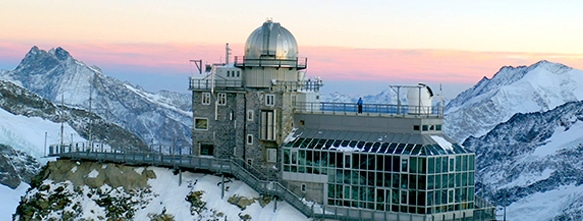
Part 3HOMO TECHNO
Produced & Directed by
GEOFF HAINES-STILES
Written by
ALAN LIGHTMAN
&
GEOFF HAINES-STILES
Executive Producer
ERNA AKUGINOW
Producers
NATHAN DAPPEN
NEIL LOSIN
Associate Producer
SEAN FEUER
SAMUEL STEFAN
GIACOMO GANDOSSI
Music composed & performed by
ZOË KEATING
Composer assistant & additional music remixer
JARED MEEKER
Score mixing & mastering engineer
COUNT
Editors
SEAN FEUER
JEDD EHRMANN
ART HOWARD
Additional editing
NATHAN DAPPEN
GEORGIA KRAUSE
Main titles & motion graphics
CRAZYBRIDGE STUDIOS
Early universe storyboards & animations
HARRY EVETT
Astronomical computer graphics
PIXELDUST STUDIOS
Cinematographers
NATHANIEL CHILD
RICHARD CHISOLM
NATHAN DAPPEN
SEAN FEUER
ART HOWARD
NEIL LOSIN
LEANDRO MONTI
SAMUEL STEFAN
Additional cinematography
NATHAN CLAPP
DAVID HUTCHINSON
AMY ODEN
Sound
CAMILLE BONARD
JONATHAN COHEN
DWAYNE DELL
ANDRE JOHNSON
Drone cinematography
SAMUEL STEFAN
MARC WEGMUELLER
NATHAN DAPPEN
Location coordinators
MARC WEGMUELLER
ADRIEN PILET
GIANMARCO FUSI
Maine timelapses
NATHANIEL CHILD
Production Supervisor, France & Switzerland
ELISABETH CHATZINIKOLAOU
Production Services Provided by
GOLDCREST NYC
Colorist
ALEX BERMAN
Conform editor
TWAIN THEODORE RICHARDSON
DI Assist
DAN DRAGICEVICH
Data I/O Manager
AARON KELLY
DI Producer
WADE RUDOLPH
Sound Facility
PHILADELPHIA POST
Rerecording Mixer
JOHN BAKER
Sound Editor
STEVE CAMPAGNA
Sound Supervisor
SCOTT WAZ, CAS
Narration recording
RUMBLESTRIP AUDIO, Boston
TODD HRINDA
KEN CHASE
Science consultants
DONALD GOLDSMITH
ALEX JI
DON PAGE
PAUL SCHECHTER
Creative consultant
PAULA FROEHLE
Publicist
ADAM J. SEGAL
THE 2050 GROUP
Graphic Design & Marketing
GREG MORAES
LAURA HUBBARD
DANITA BAYER
MORAES INC.
Web Development
NICK BUSHKAR
Archival LIGO footage
LIGO footage/graphics courtesy of MIT/REDGLASS PICTURES, “Sound of Gravity”
Early B&W LIGO footage from “GRAVITY” (1985) © MARY JANE DOHERTY
Footage from LIGO, a Passion for Understanding, LIGO Generations, LIGO Detection &
Narrated Tour of LIGO courtesy KAI STAATS, Over the Sun, LLC
LIGO MIT detection photographs courtesy ADVANCED LIGO DOCUMENTARY PROJECT
https://ligothefilm.com
Additional footage courtesy Caltech/MIT/LIGO Laboratory
NSF, the National Science Foundation
Additional LIGO stills courtesy
MACARTHUR FOUNDATION / NERGIS MAVALVALA
MIT Alumni Magazine, LEN RUBENSTEIN / MIT Museum
MIT News, BRYCE VICKMARCK / MIT photo, MARGO FOOTE
Location assistance gratefully acknowledged
Desimone lab, MIT
JULIE PRYOR
CATHERINE NUNZIATA
YASAMAN BAGHERZADEH
STEVEN P. SHANNON
JULIA MARTIN
SARAH McDONNELL
Erik Sorto sequence
CHARLES LIU
&
RICHARD ANDERSEN
ROCHESSA WASHINGTON
MARIA SORTO
LUKE BASHFORD & DAVID BJANES
DEBORAH WILLIAMS HEDGES
Research footage © 2015 Keck Medicine of USC
Rancho Los Amigos National Rehabilitation Center
Caltech
USC Keck Center
Location assistance gratefully acknowledged
LIGO lab, MIT
JULIA C. KELLER
MARIE WOODS
MYRON MACINNIS
WILLIAM KATZMAN
Font-de-Gaume cave
MARC MARTINEZ
JEAN-PIERRE VANZO
CENTRE DES MONUMENTS NATIONAUX
NATHALIE MOREL
NATIONAL CENTER FOR PREHISTORY
MINISTRY OF CULTURE, FRANCE
MAYELIN ENAMORADO
CERN
SARAH CHARLEY
The producers wish to thank
ROBERT DESIMONE
REBECCA GOLDSTEIN
NERGIS MAVALVALA
ERIK SORTO
RAI WEISS
DANIELA BISSIG & ERICH FURRER
CHICAGO MEDIA PROJECT
STEVE COHEN, ALEXANDER KELLISON
LES GUTHMAN
DENA A. HEADLEE, NSF
JUNGFRAU BAHNEN
SARAH KLEIN, REDGLASS PICTURES
CHRISTOPHER LEVENICK
JEAN LIGHTMAN
CHARLES LIU
PROFESSOR HANS-RUDOLF OTT
CONOR SCANLON
ROCHESSA WASHINGTON, RANCHO LOS AMIGOS
INTERNATIONALE STIFTUNG HFSJG HOCHALPINE FORSCHUNGSSTATIONEN
Sumire lenses furnished by
CANON
Funding provided by the
JOHN TEMPLETON FOUNDATION
Stock and stills rights & permissions
“I AM A MAN” © DR. ERNEST C. WITHERS, SR. COURTESY OF THE WITHERS FAMILY TRUST ESTATE
FONT-DE-GAUME CAVE BISON AND TECTIFORM IMAGES:
© N. AUJOULAT, CENTRE NATIONAL DE PRÉHISTOIRE/MINISTÈRE DE LA CULTURE
THE NOBEL FOUNDATION
MAX PLANCK INSTITUTE FOR GRAVITATIONAL PHYSICS (ALBERT EINSTEIN INSTITUTE) / MILDE MARKETING SCIENCE COMMUNICATION
EXOZET EFFECTS
NASA, ESA, AND G. BACON (STSCI); SCIENCE – NASA, ESA, P. OESCH (YALE UNIVERSITY), G. BRAMMER (STSCI)
VAN DOKKUM (YALE UNIVERSITY), AND G. ILLINGWORTH (UNIVERSITY OF CALIFORNIA, SANTA CRUZ)
NAIDU ET AL, P. OESCH, T. TREU, GLASS-JWST, NASA/CSA/ESA/STSCI
US ARMY “TOMORROW TELEVISION” / PRELINGER / INTERNET ARCHIVE
WPA BERENICE ABBOTT
&
EINSTEIN COLORIZATION © MARINA AMARAL. REPRODUCED BY PERMISSION OF MARINA AMARAL C/O GEORGINA CAPEL ASSOCIATES LTD
ALAMY
ARTGRID
CALTECH, MIT, LIGO LABORATORY, NSF
NASA, ESA HUBBLE
EVENT HORIZON TELESCOPE
GETTY IMAGES
ZAREEB LORENZANA
LIBRARY OF CONGRESS
NASA
NASA’S GODDARD SPACE FLIGHT CENTER
POND5
REDGLASS PICTURES
SHUTTERSTOCK
STSCI
WIKIMEDIA
Executive in Charge
ERNA AKUGINOW
For American Public Television
JUDY BARLOW
SHAWN HALFORD
LAUREN MILLS
© 2022 Geoff Haines-Stiles Productions, Inc.
WHY and HOW we made SEARCHING
By Geoff Haines-Stiles
As I recall it, in the movie “Annie Hall,” Paul Simon—playing a Hollywood type—says “Right now it’s just a notion, but I think I can get the money to make it a concept, and later turn it into an idea.” Here’s where and how the notion that grew into SEARCHING started.
I was sitting beside a pool in Hawaii in winter 2019, where we’d gone to baby-sit 2-year old Theo, hoping his Dad would work on a screenplay, while his Mom was working on a “Fast and Furious” spin-off. I am not sure why I had brought along a copy of Alan Lightman’s Searching for Stars on an Island in Maine, but it might well have been a favorable June 2018 review in the New York Times. In any event, a couple of sentences jumped out at me. “It is astonishing but true that if I could attach a small tag to each of the atoms of my body and travel with them backward in time, I would find that those atoms originated in particular stars in the sky. Those exact atoms.” I’m sure those words connected with me because of one of Carl Sagan’s poetic bumper stickers: “We are star-stuff.”
In the 1970’s, I’d been working at WCAU-TV in Philadelphia, then a CBS O&O (owned and operated) station, producing 39 original half hours a year, a frenetic pace, at a time when CBS still had a Blue Book “bible” with rigorous standards dating back to the glory days of Edward R. Murrow. (“No music in documentaries” so as not to surreptitiously trigger audience emotions; “no B-roll cutaway shots” unless filmed in the presence of interviewees.) But I was lucky enough to get an invite to a dinner party where a former BBC producer/director, Adrian Malone, was present. He’d created the Jacob Bronowski “Ascent of Man” series, designed to rival Kenneth Clark’s art historical “Civilization” with a series on the history of science. Malone was an auto-didact and a compelling story-teller, a Dylan Thomas of TV. He said he’d been hired to work on a multi-part PBS series then called “Man and the Cosmos” with Cornell astronomer Carl Sagan, who’d just won a Pulitzer for Dragons of Eden, a book on the brain. (Sagan was a space scientist also interested in biology, philosophy, poetry, music, theology, a true Renaissance man.) Over the following months I bombarded Adrian’s office at Penn with polite but strategic and subtly-begging letters, and eventually was hired to work on “Cosmos” which was being produced out of KCET Los Angeles. Making “Cosmos” was not easy: Malone and Sagan both had egos, both thought they knew best, and fought each other on ideas and visuals, and tried to recruit we producers and other staff to enlist in each of their armies. I tried to keep lines open to both sides, and eventually the thirteen hours made it to air. It was the first US-born science series, and it made the front cover of TIME magazine. Sixteen million people viewed the first episode, and until “The Civil War” it was the most watched public TV series ever. I also executive produced “The Music of Cosmos” LP with Vangelis’s memorable “Heaven and Hell” theme music. Even with the more recent “Cosmos” reboot with Neil DeGrasse Tyson, it’s gratifying how many people still fondly remember the original. What especially struck me, then and since, was how broad the audience was for television that tried to share profound ideas in dramatic and innovative production techniques. Whatever the challenges of working on “Cosmos” it was a fantastic experience for all of us, working with two world-class talents, perhaps both geniuses, in TV and science. As the poet Wordsworth wrote, “Bliss was it in that dawn to be alive / But to be young was very heaven!” I’ve continued working in science documentaries for more than four decades, and the experience has taken me to both Poles and all seven continents, and allowed me to interact with Stephen Hawking, Richard Feynman, Lily Tomlin, Al Gore, James Watson, and many more.
Alan’s statement about tracing the atoms of our body back to particular stars seemed a great core idea for a TV program, and via MIT I reached out to him. He soon wrote back, from Cambodia where he was engaged in NGO work that he’d be interested, so long as it was not just a hard-nosed science documentary. And so began the process that led to SEARCHING. Initially we planned a 90 minute feature documentary, and thought about submissions to film festivals before any broadcasts. But as we started filming, fully funded by the John Templeton Foundation, we soon found ourselves accumulating more great material than would fit in one film. And we realized that wide availability via public television was a more democratic approach to a much larger audience. Although delayed by the pandemic, SEARCHING grew into the three one hours that appear on public television starting January 7, 2023, and on PBS.org, and on this website.
Just as in the original “Cosmos”, and unlike on CBS in the old days, music is an important part of SEARCHING. Erna Akuginow, SEARCHING’s Executive Producer and my partner in life and in television, and I were living in Jersey City, NJ, and my early morning exercise was to bicycle down to Liberty State Park and ride along the waterfront, looking out at the NYC skyline and the Statue of Liberty. I often listened to a Philip Glass playlist on Pandora, and was more and more intrigued by music from avant garde cellist Zoë Keating. Even before starting development on SEARCHING I filed her name away. We used her hugely popular “Optimist” for an early demo reel, using iPhone stills to give a sense of how Alan’s “Starry Night” experience—one of the chapters in Searching for Stars —might appear on film. So we were delighted to find that Zoë was very interested in science, and after meeting in person in Vermont, she agreed to compose and perform the score. Many of her cues are completely original, such as the wonderful “Big Bang to Us” theme, with a strong and exciting cello pluck as a supernova explodes, distributing those atoms that first intrigued me into the cosmos. And her music for Alan’s visit to Einstein’s apartment in Bern, Switzerland, is also magical and memorable. Triggered by Alan’s narration about how symbols of time seem everywhere, Zoë’s tick-tocks lead to Alan’s poetic revery, imagining what young Albert in 1905 might have been thinking as he worked on his theory of special relativity and a new concept of space-time.
In some ways, TV producers are scavengers, picking at ideas and opportunities like vultures at a kill. We were primarily in Switzerland to film at the giant particle accelerator known as CERN. We asked our local fixer, Sam Stefan, to see if there was also a grand old hotel, relatively nearby, where we might film a long line of chandeliers, bringing to life Alan’s metaphor of how distant galaxies were like faraway chandeliers whose light had not yet had time to reach us. Sam did a great job of finding some candidates, and as you can see in part 2, we filmed astronomer Pascal Oesch (co-discoverer of galaxy GN-z11) in the grand ballroom of the Victoria-Jungfrau Hotel in Interlaken. But Sam also shared a few images of a location we did not have in the outlines we were working from, a place known as the “Top of Europe,” an old astronomical observatory on top of Jungfraujoch near the Eiger, now used for weather and atmospheric research. It was truly a spectacular location. And it was relatively close to where we’d be in any event. (See what I mean by opportunistic scavengers?) Alan, Erna and I said we had to film there, but what could the content be? We had already filmed the planned final sequence, “Atoms Everlasting,” on Alan’s island in Maine. But as light faded and we were running out of time, dogs kept on barking over on the mainland, and drunken cheers rang out as neighbors gathered to watch football. The ideas were fine, but the sound was not. So we decided to re-shoot on the deck of the Sphinx Observatory. This was not an easy shoot: despite renting winter clothing from a ski shop in Grindelwald, we were all freezing. Alan had a hard time making his mouth move. And when I foolishly volunteered to be his body double for several drone shots, I was chilled to the bone, pretending to be him looking out over the Bernese Alps. However, the combination of the scenery, excellent drone videography by Sam and Marc Wegmueller, and Alan’s words and thoughts, all came together, despite the wind and cold, and that’s the scene that ends part 3.
We’d spent many months in pre-production, when the pandemic made international and domestic travel impossible, and university labs and campuses were inaccessible. We brainstormed scenes via Zoom: one fraught discussion was whether it was a good idea to film Alan appearing to have a colonoscopy, as he wrote about the experience in Searching for Stars, in an example of being confronted with the raw materiality of our existence. Some of the production team thought it a good idea, a somewhat amusing and certainly unexpected juxtaposition to what we planned as a high-end and science-based computer graphics sequence tracing the source of our bodies’ atoms and elements in the stars. Erna and I strongly disagreed with showing a colonoscopy, but in the back-and-forth we came up with another unexpected and intentionally tongue-in-cheek idea which was to have Alan go “shopping for atoms” in a supermarket, even calculating the exact cost of the elements in a typical human body, which turned out to be $538.66.
All that to say that we started filming with a pretty detailed shooting script. But, vultures again, when I realized we’d be driving from CERN to Interlaken, and passing through Bern where the Einstein Haus was situated, I could not let go of the idea of adding a scene there. After all, Alan’s first and perhaps still most famous and loved novel, Einstein’s Dreams, was situated in Bern, and we reference Einstein’s prediction that gravitational waves would always be too small to be detected to set up the achievements of Rai Weiss and colleagues in building LIGO. Given our already full schedule, we had to jam in the shoot at Einstein Haus, with fixer Sam filming with Alan and me, while Erna worked with the main DP to capture pick-up shots back at the chandelier hotel. But as you can see in part 3, with poetic words from Alan, masterful editing of a montage by Sean Feuer, and great music from Zoë, we created a cinematic scene from a locational target of opportunity.
Malone and Sagan were storytellers (both now sadly no longer with us, and much lamented.) And Alan is also a story-teller; not all of those that appear in SEARCHING, the tv series, were in Searching for Stars, the book. As part of what I consider a producer’s due diligence, I tried to read as many of Alan’s books as possible, and listen to podcasts and videos. (His Screening Room is a fantastic memoir of growing up Jewish in Memphis, including stories of his father working early and hard to racially integrate the family movie theater business, and young Alan marveling at Elvis squiring two young beauties to grandfather M.A. Lightman’s private screening room. Sadly, I never found a place in the series for those tales!) In one podcast, Alan told the story of his close encounter with one of the young ospreys who each year are born and learn to fly on the island in Maine. By chance, Peter Hamilton of “Documentary TV,” mentioned in passing that he was Executive Producer of an upcoming PBS “Nature” special on ospreys, filmed by longtime natural history film-maker and osprey expert Jacob Steinberg. We commissioned Jacob to spend several days with us on Lute Island, and he captured some great, non-intrusive, drone footage, to add to his archive of osprey behavior. Happily, as you can see in “The Great Osprey Rescue” web video, he and his assistant also managed to save a young osprey from drowning after it was snatched from the nest by an eagle! As Alan notes in his “Memories” note, a few lines of text in a book, or an anecdote in a podcast, can take flight on film, but only after a lot of logistics and planning. In fact, we realized that we could amp up the emotions in Alan’s osprey encounter even more by taking the poetic liberty of showing a reflection of Alan in the osprey’s eye, and the osprey in Alan’s pupil, via computer graphics from Chris Gaal of Crazybridge. Chris also added chandeliers extending out towards infinity to the location filming in the Interlaken hotel. And when Alan wrote that at the Planck scale, time and space are stretched so thin as to almost disappear, like a vessel blown by an ancient glassblower, we spent a day with Alex Rosenberg and his assistants at a kiln in Salem Community College, NJ. Alex was a runner up in Netflix’s “Blown Away”, and worked hard to bring that metaphor to life. You can see his glass galaxy, modeled on GN-z11, beside Alan and Pascal in the chandelier hotel. Be careful what metaphor you write, Alan, because some producer/director just might make it real!
All in all, it’s been a pretty good ride with Alan and all the talented folks you can see named in the extensive credits that end each program, and happily without the tsouris of intellectual combat that marked “Cosmos.” We captured some memorable interactions with some very interesting characters, from Nobel laureates and MacArthur geniuses to the Dalai Lama, and we have some visually impressive scenes to help tell our stories, such as the early morning river in Les Eyzies, where Marc Wegmueller flew a drone into and out of mist that looked like a 19th century Impressionist painting. We hope the mix of ideas, words, music and images offer a thought-provoking experience that engages both the mind and the emotions.
Feel free to share your reactions by submitting your responses to the Big Questions, or on Facebook, Twitter or Instagram. Thanks for watching.
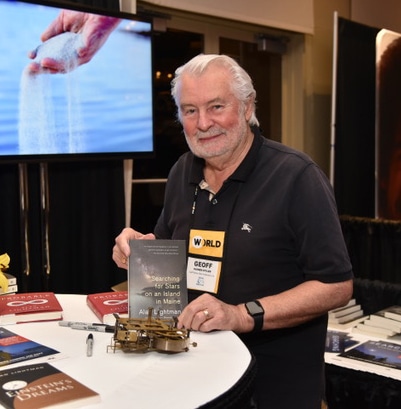
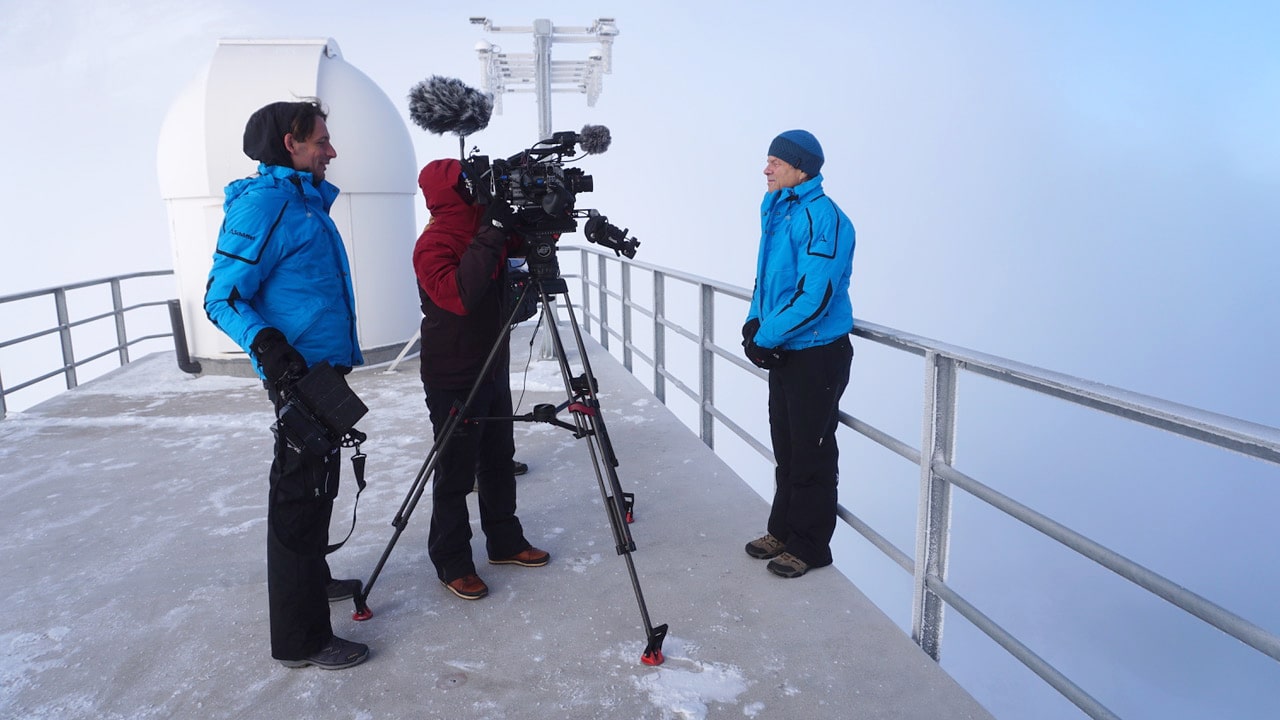
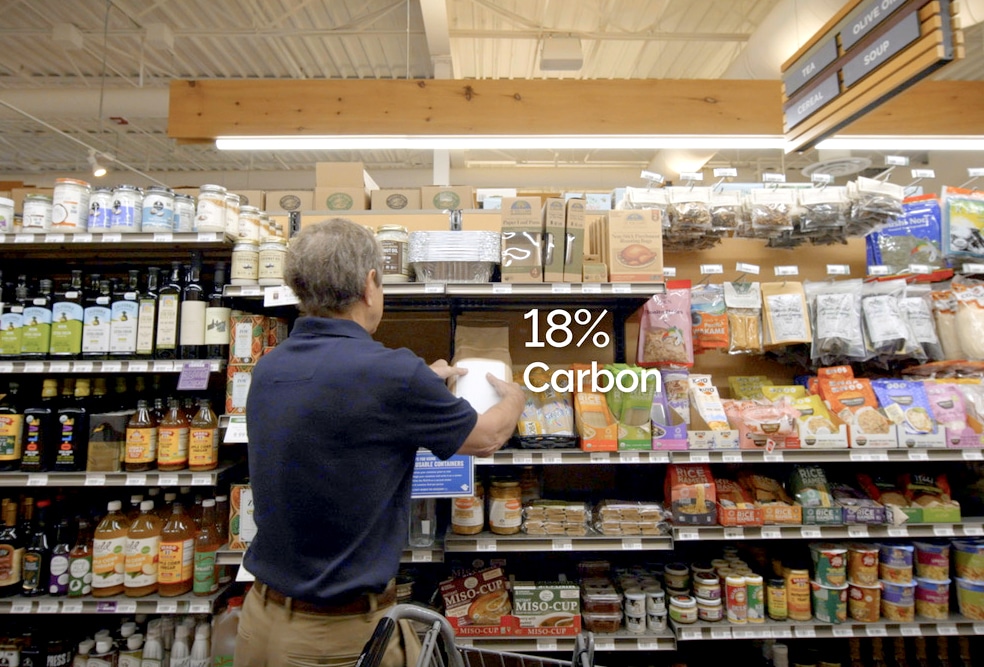
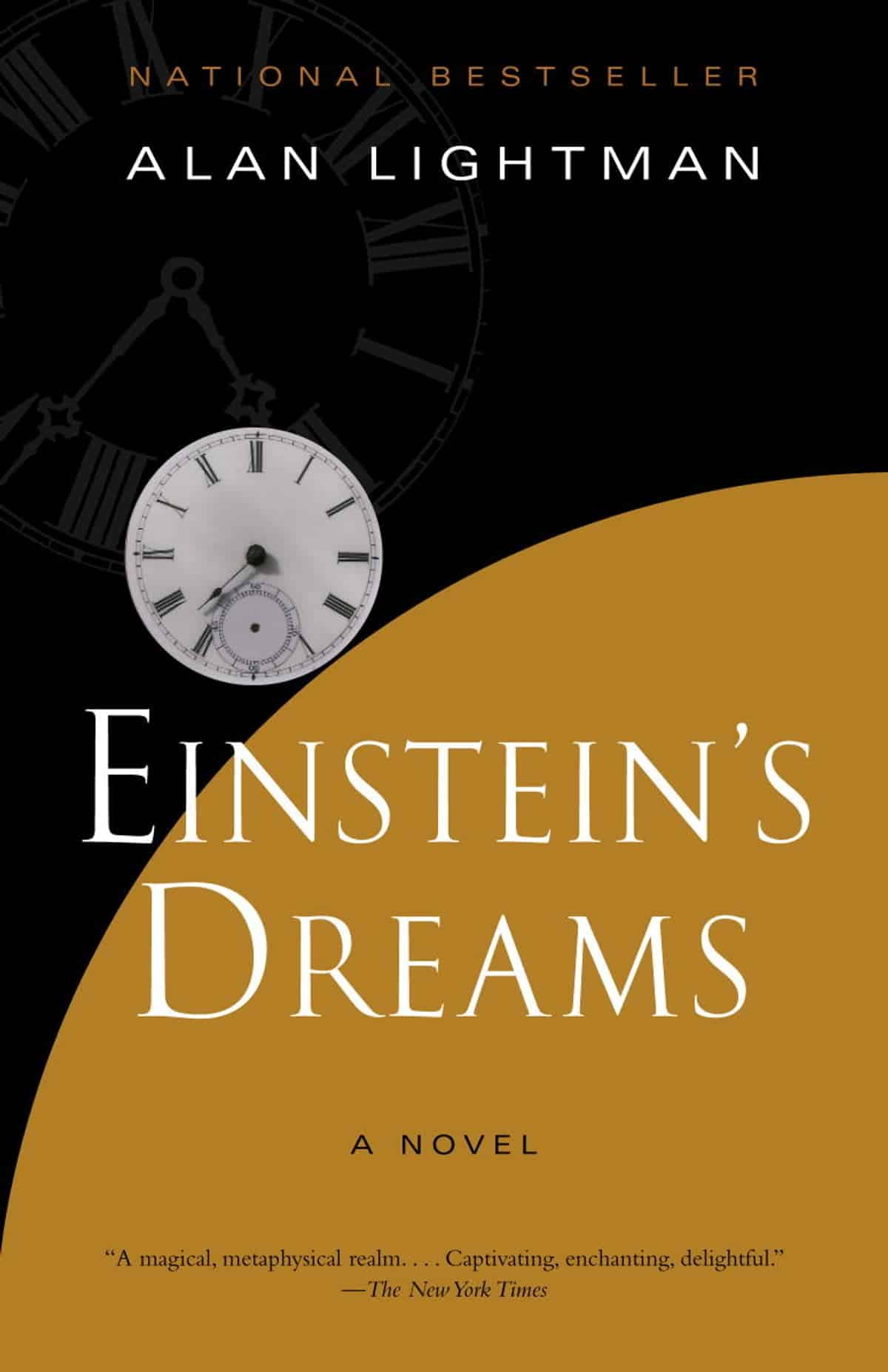
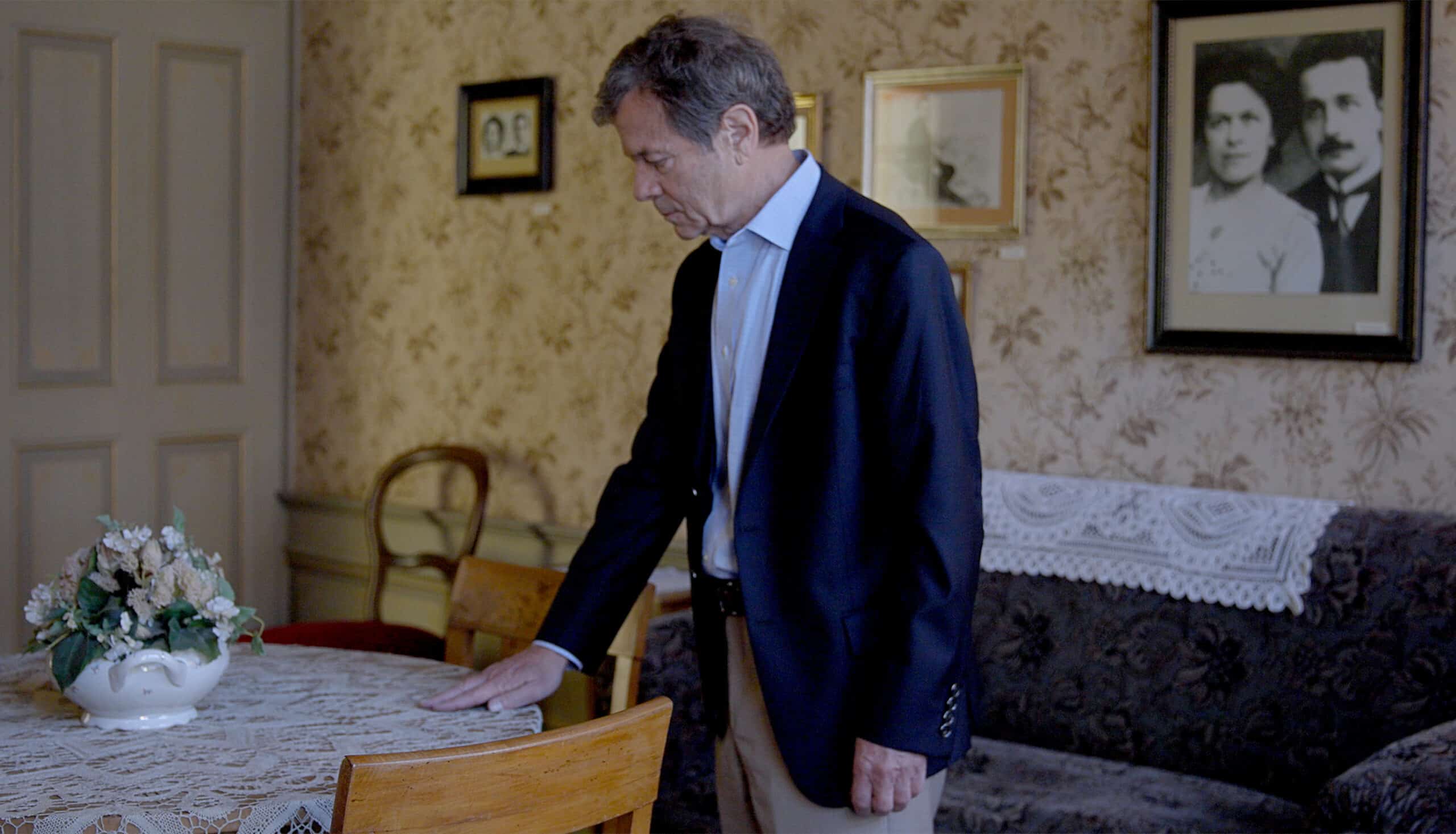
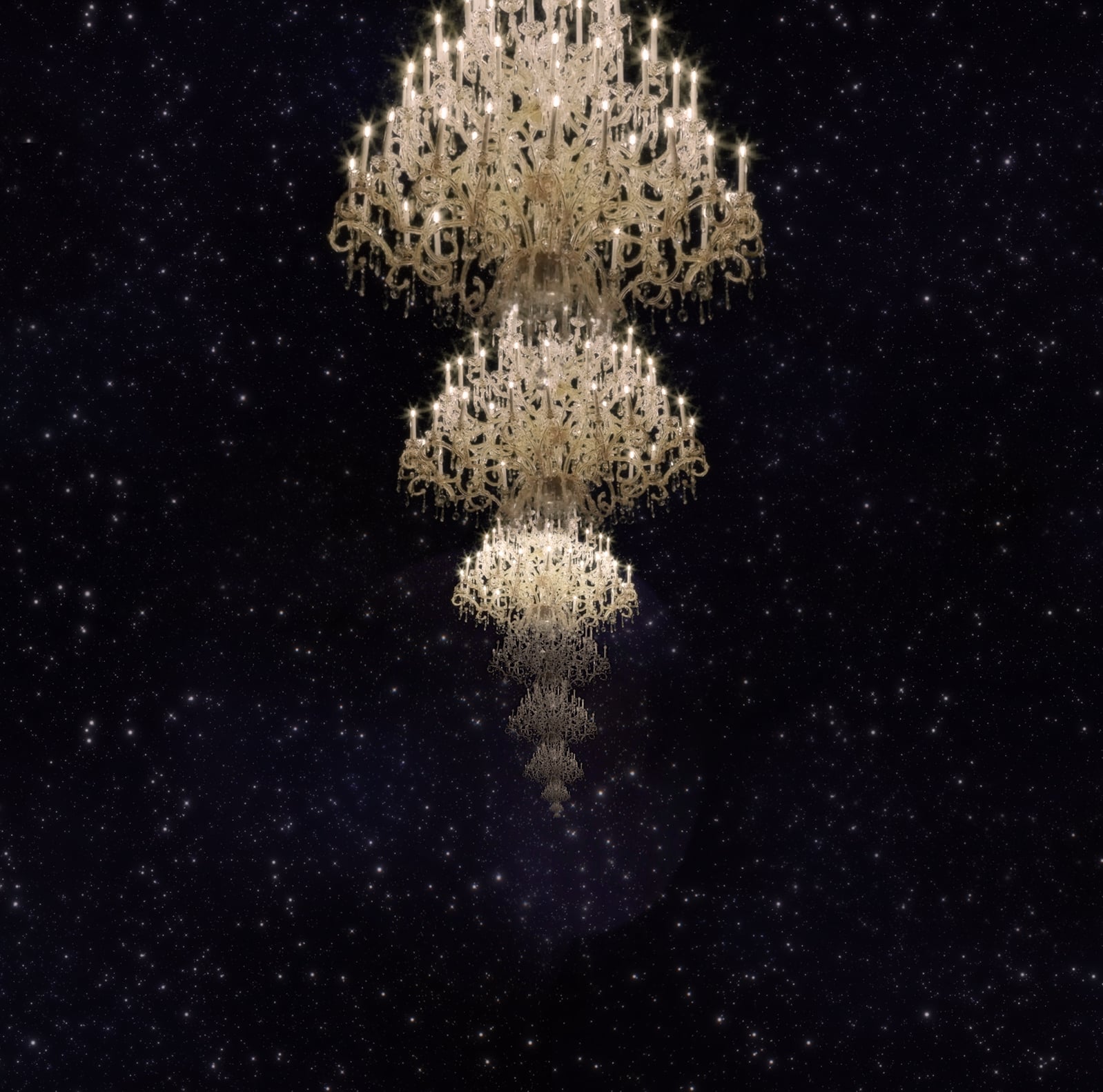
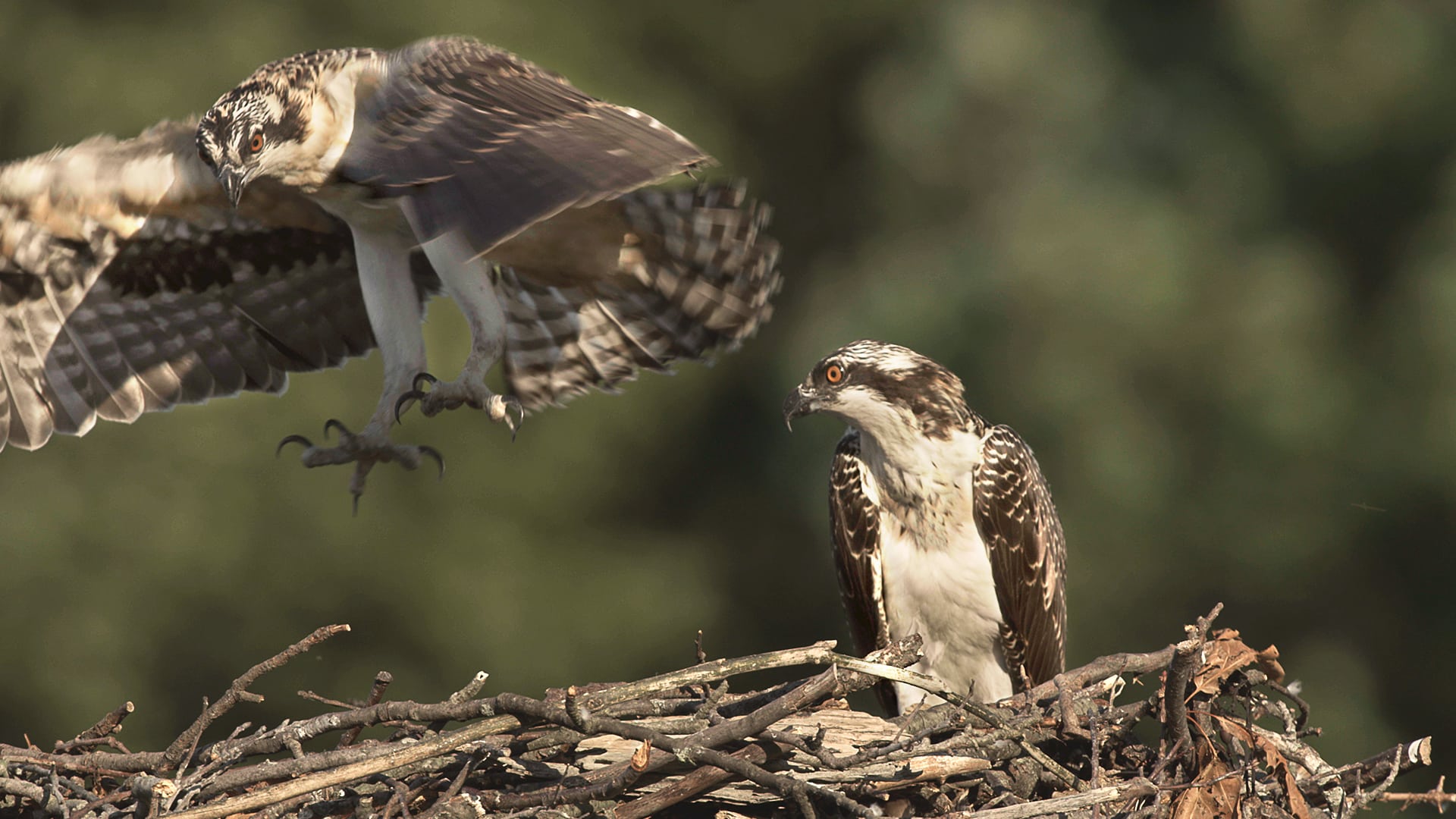
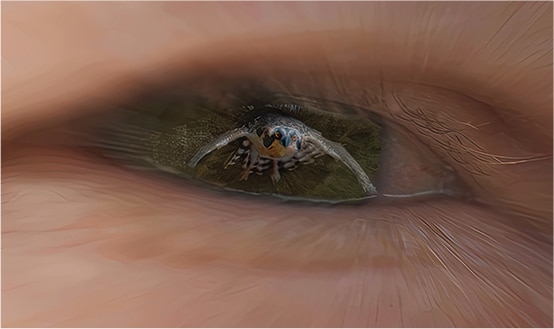
American Public Television (APT) is the leading syndicator of high-quality, top-rated programming to the nation’s public television stations. Founded in 1961, APT distributes 250 new program titles per year and more than one-third of the top 100 highest-rated public television titles in the U.S. APT’s diverse catalog includes prominent documentaries, performance, dramas, how-to programs, classic movies, children’s series and news and current affairs programs. Midsomer Murders, America’s Test Kitchen, AfroPoP, Rick Steves’ Europe, Pacific Heartbeat, Christopher Kimball’s Milk Street Television, The Indian Doctor, Legacy List with Matt Paxton, Lidia’s Kitchen, Kevin Belton’s New Orleans Kitchen, Simply Ming, The Best of the Joy of Painting with Bob Ross, Front & Center, James Patterson’s Kid Stew and NHK Newsline are a sampling of APT’s programs, considered some of the most popular on public television. APT also licenses programs internationally through its APT Worldwide service and distributes Create®TV – featuring the best of public television's lifestyle programming – and WORLD™, public television’s premier news, science and documentary channel. To find out more about APT’s programs and services, visit APTonline.org.
SEARCHING was made possible through the support of grant #61963 from the John Templeton Foundation. The opinions expressed in this project are those of the writers and producers and do not necessarily reflect the views of the John Templeton Foundation.
“The John Templeton Foundation serves as a philanthropic catalyst for discoveries relating to the deepest and most perplexing questions facing humankind. We support research on subjects ranging from complexity, evolution, and emergence to creativity, forgiveness, and free will. We encourage civil, informed dialog among scientists, philosophers, and theologians, as well as between such experts and the public at large. In all cases, our goal is the same: to spur curiosity and accelerate discovery.
In order to catalyze such discoveries, we provide grants for independent research that advances the mission of the Foundation. Our grants for public engagement help people worldwide engage the fruits of that research and explore the Big Questions. In addition to supporting academic research on these and similar questions, we support efforts to bring relevant findings to non-specialist audiences. Through a wide range of media – print, digital, broadcast, and film – we seek to raise awareness about cutting-edge discoveries in ways that are clear and thought-provoking.”





